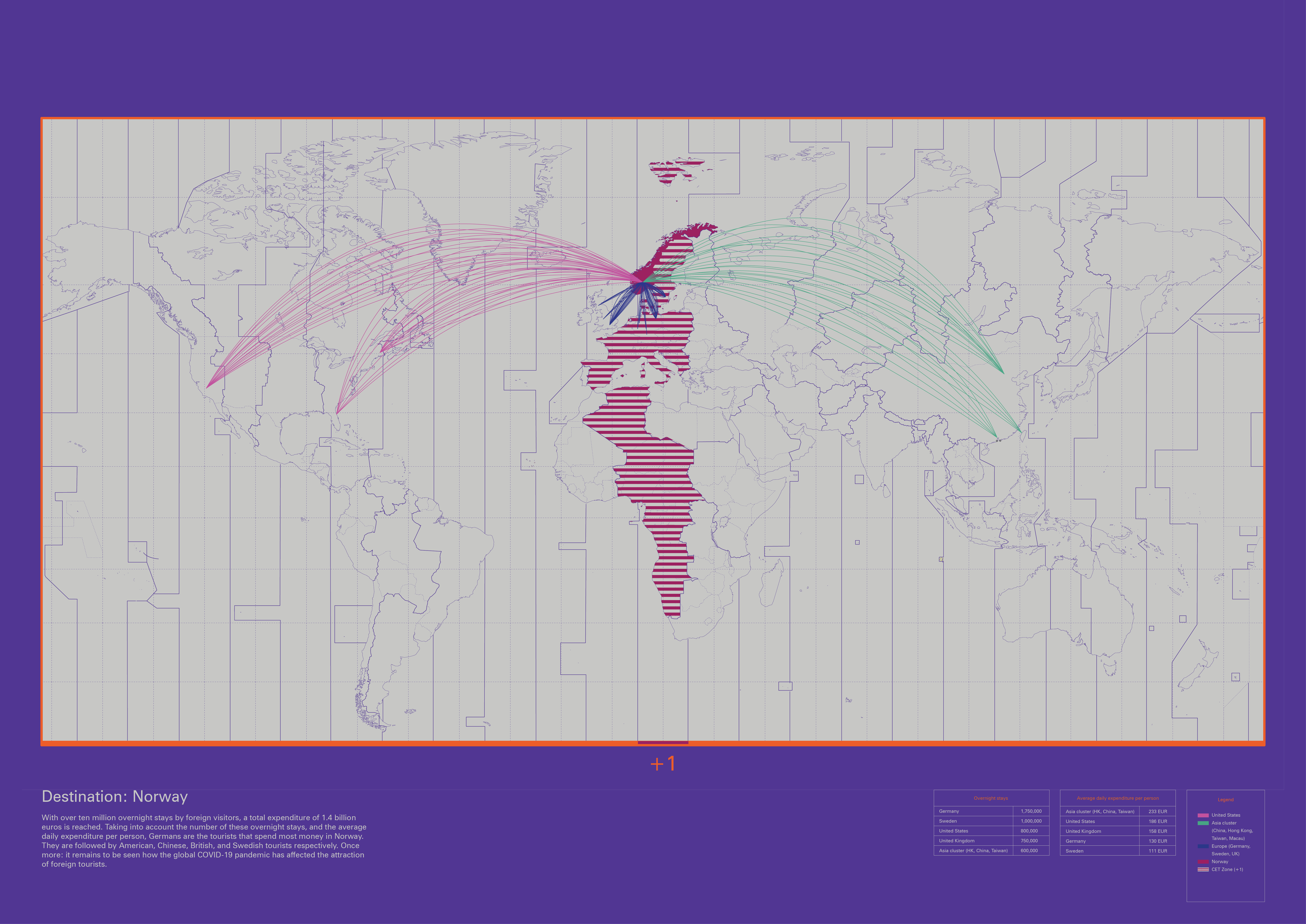
Destination: Norway
With over ten million overnight stays by foreign visitors, a total expenditure of 1.4 billion euros is reached. Taking into account the number of these overnight stays, and the average daily expenditure per person, Germans are the tourists that spend most money in Norway. They are followed by American, Chinese, British, and Swedish tourists respectively. Once more: it remains to be seen how the global COVID-19 pandemic has affected the attraction of foreign tourists.
From Natural Resources to Tourism

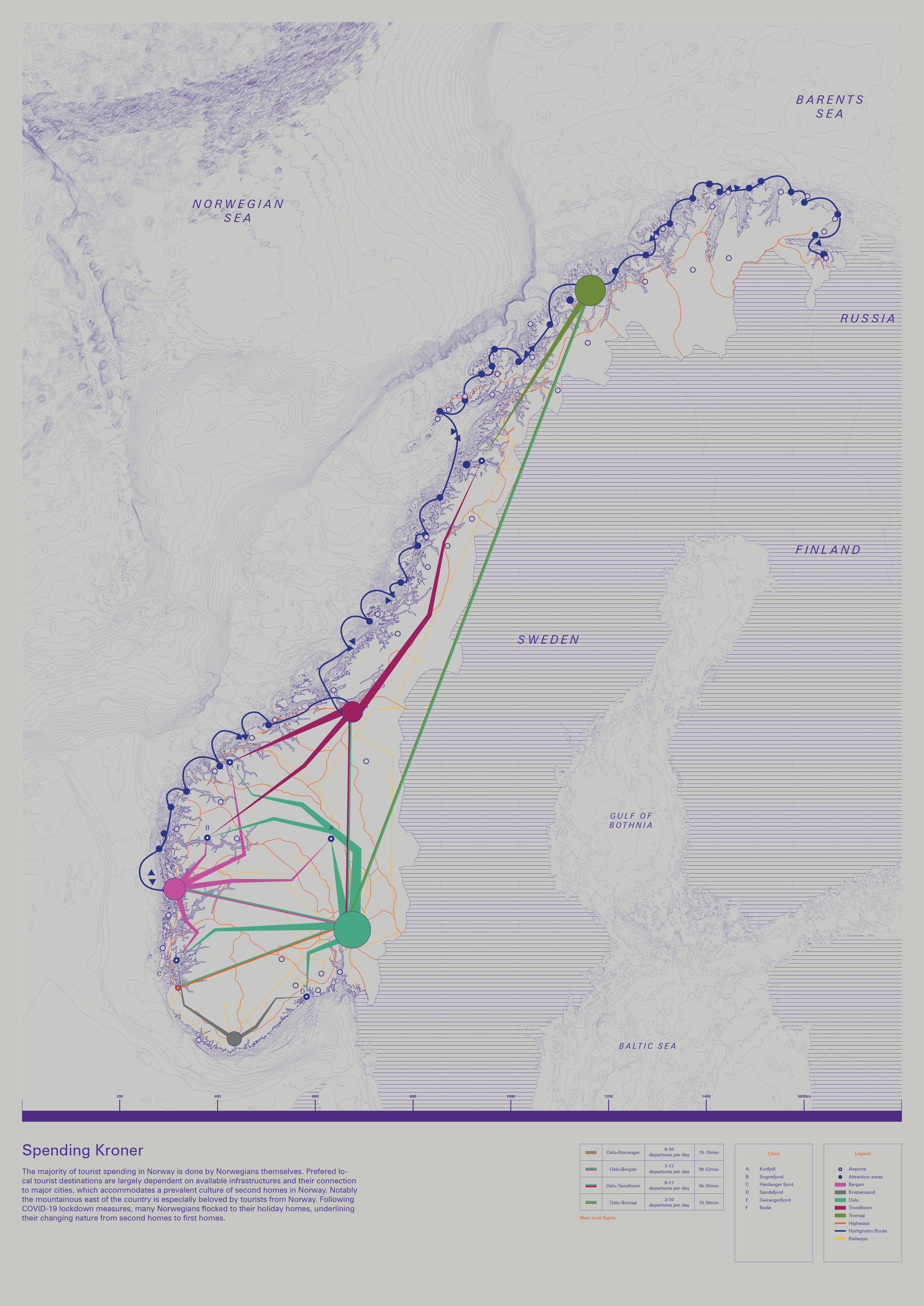
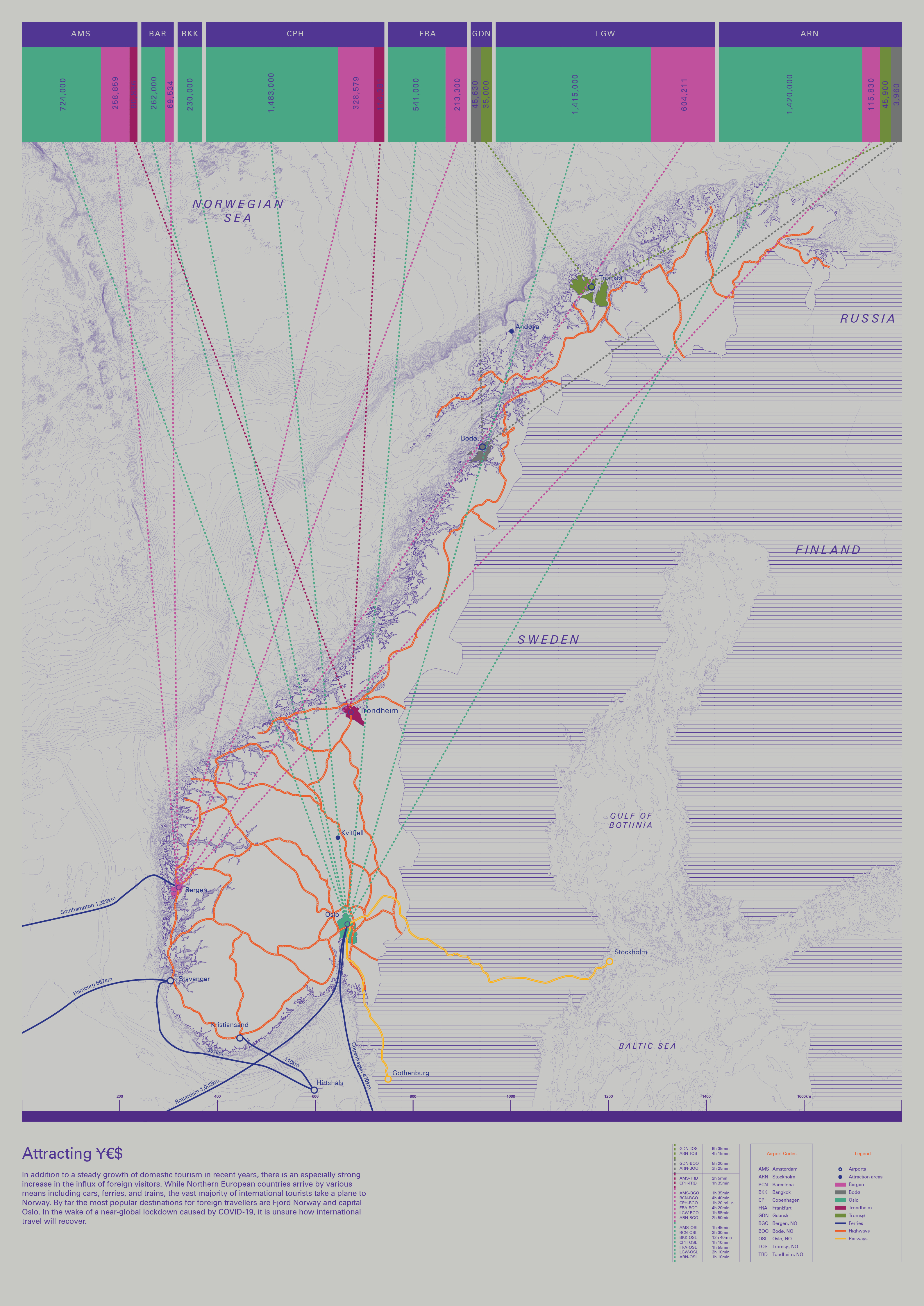
Exiting Extraction
Spending Kroner
Attracting ¥€$
Although the petroleum industry continues to be the cornerstone of the Norwegian economy, amounting to 18% of the country’s GDP, Norway has drastically reduced the extraction of other natural resources like stones, metals, and minerals. The shrinking mining industry now extracts these resources in only 15% of the available deposits. While hazardous drilling for oil in untouched arctic areas is currently being explored, paradoxically - as per its 2016 Green Competitiveness initiative - the Norwegian government has also defined the tourism industry as a new and supposedly sustainable economic focal point in a post-petroleum economy.
The majority of tourist spending in Norway is done by Norwegians themselves. Prefered local tourist destinations are largely dependent on available infrastructures and their connection to major cities, which accommodates a prevalent culture of second homes in Norway. Notably the mountainous east of the country is especially beloved by tourists from Norway. Following COVID-19 lockdown measures, many Norwegians flocked to their holiday homes, underlining their changing nature from second homes to first homes.
In addition to a steady growth of domestic tourism in recent years, there is an especially strong increase in the influx of foreign visitors. While Northern European countries arrive by various means including cars, ferries, and trains, the vast majority of international tourists take a plane to Norway. By far the most popular destinations for foreign travellers are Fjord Norway and capital Oslo. In the wake of a near-global lockdown caused by COVID-19, it is unsure how international travel will recover.
Bergen:
Bergen:
Navigating Transportation

The Present Condition in 2020
A hundred and twenty five years ago, the Hurtigruten line started its maritime connection called coastal voyage from Bergen to Kirkenes. Today many more ships visit the city bringing up to eight thousand cruise passengers in on a busy day. Additionally, Bergen’s airport is the second largest airport in Norway welcoming six million people in 2018, sixty percent of which were Norwegians.
A hundred and twenty five years ago, the Hurtigruten line started its maritime connection called coastal voyage from Bergen to Kirkenes. Today many more ships visit the city bringing up to eight thousand cruise passengers in on a busy day. Additionally, Bergen’s airport is the second largest airport in Norway welcoming six million people in 2018, sixty percent of which were Norwegians.
The Vision of the Roadmap Towards Sustainable Travel and Tourism
In accordance with the Roadmap: Towards Sustainable Travel and Tourism in Norway, the emissions of transportation should be lowered. Following this, the polluting Hurtigruten line will be partly replaced by the planned expansion of the E39 coastal highway. The further stimulation of travel by train brings down the number of domestic flights.
In accordance with the Roadmap: Towards Sustainable Travel and Tourism in Norway, the emissions of transportation should be lowered. Following this, the polluting Hurtigruten line will be partly replaced by the planned expansion of the E39 coastal highway. The further stimulation of travel by train brings down the number of domestic flights.


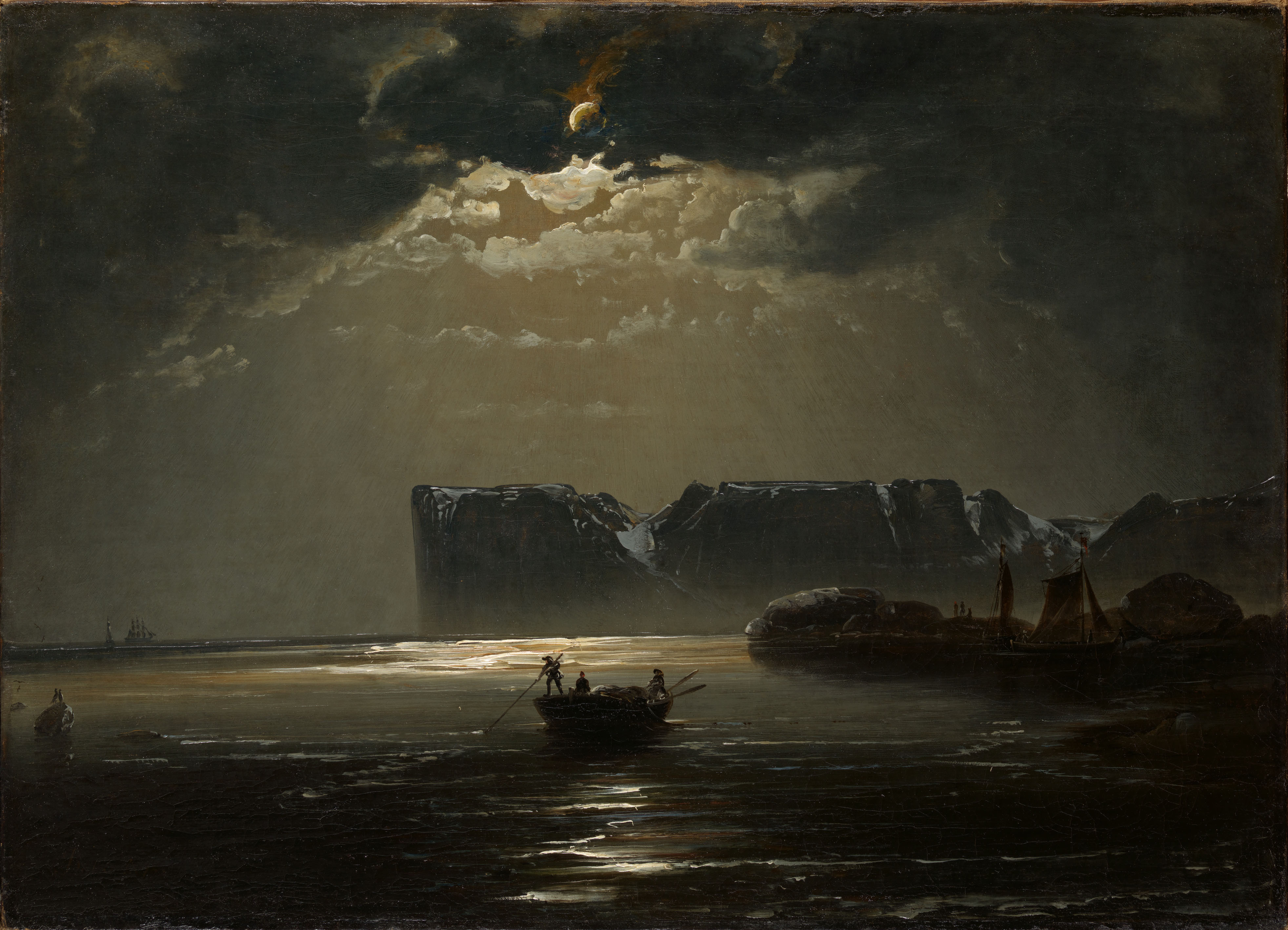
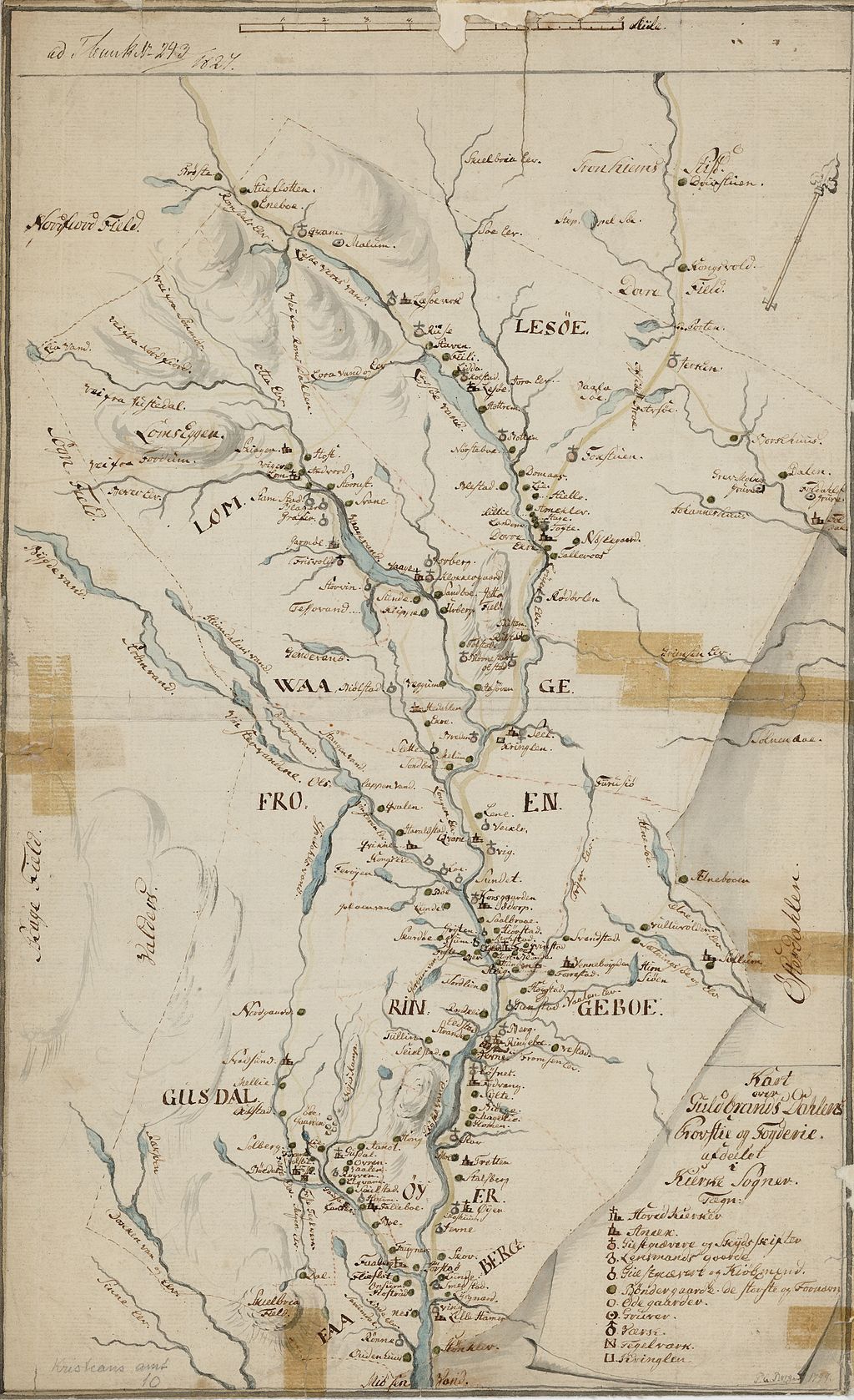

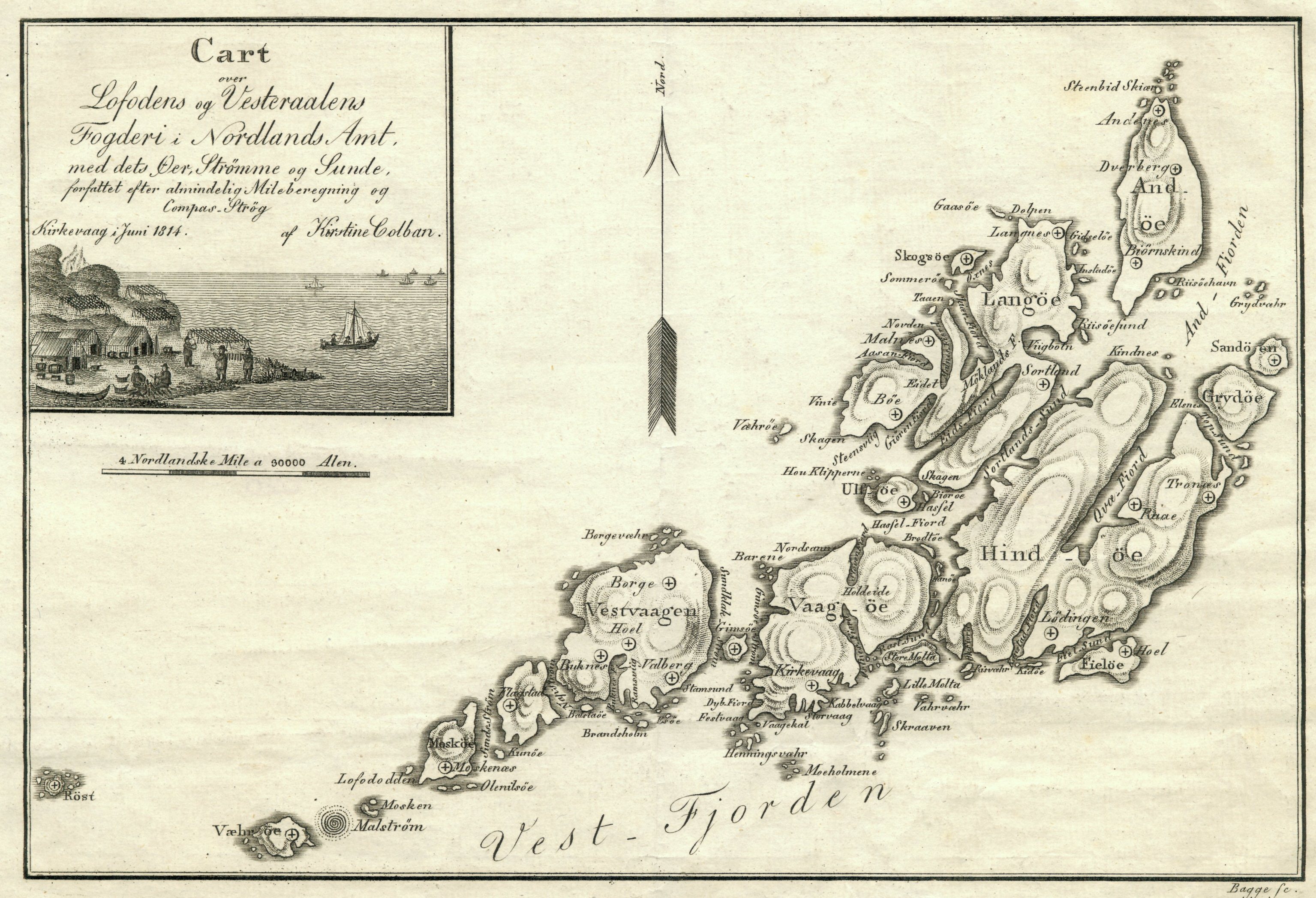

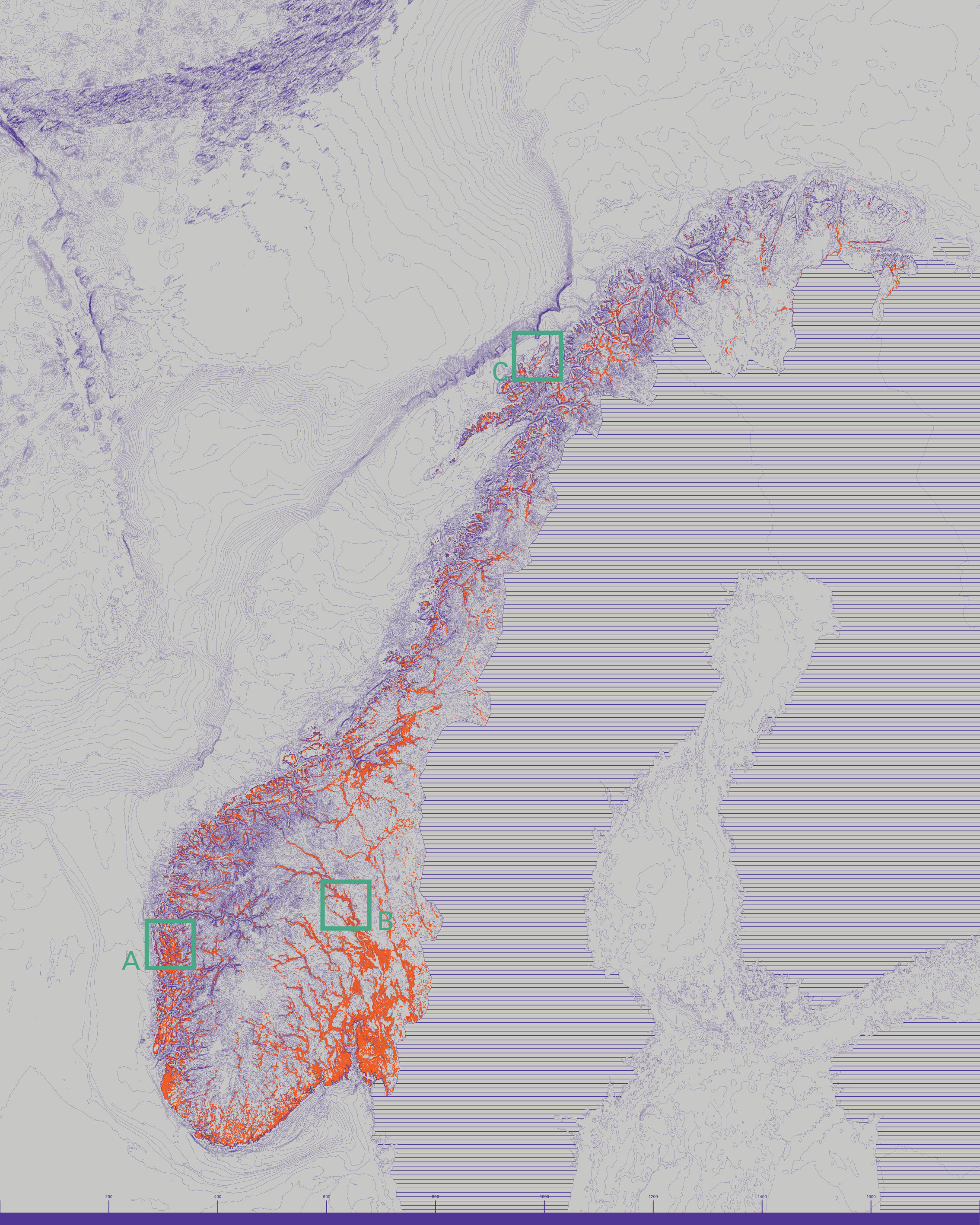
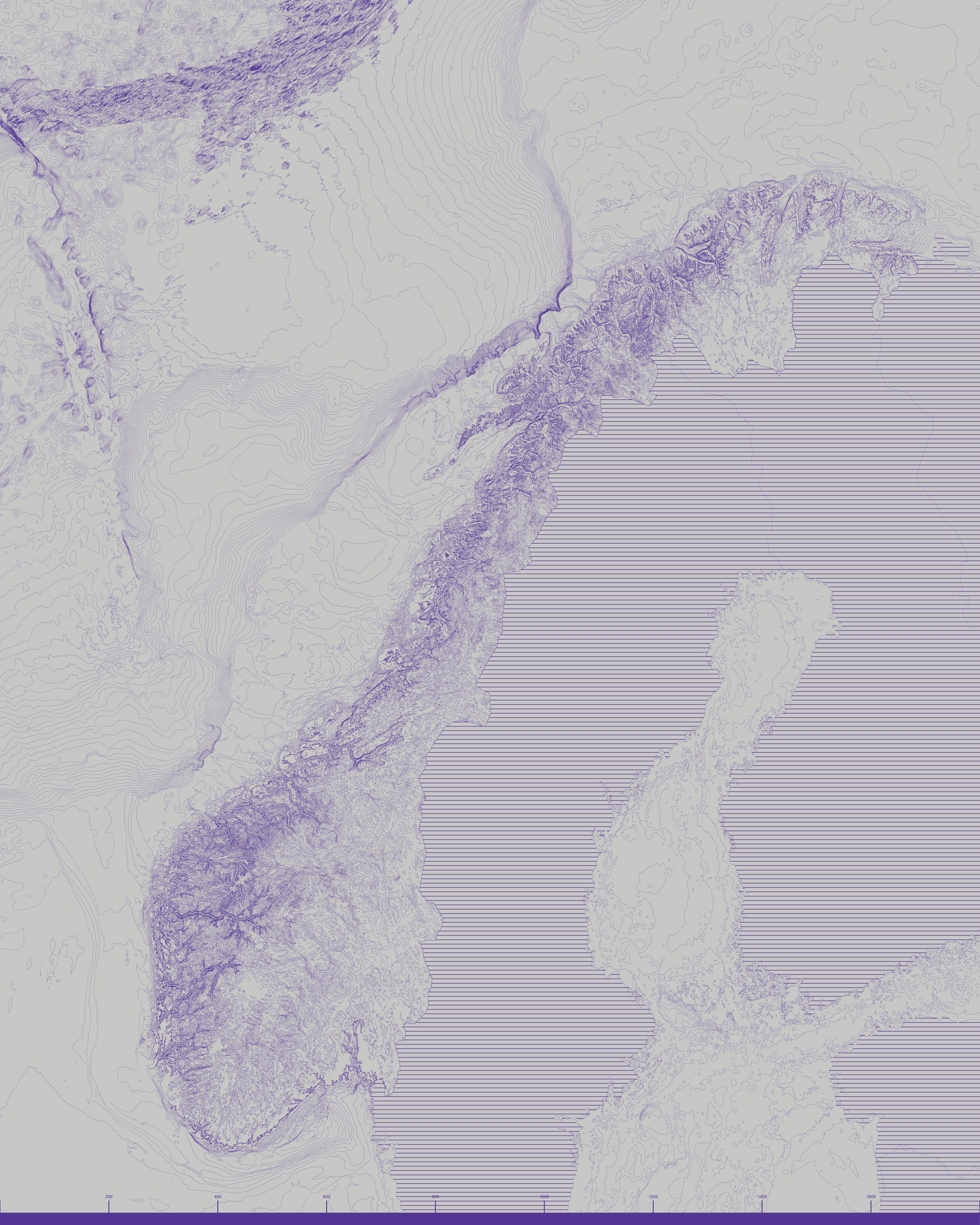
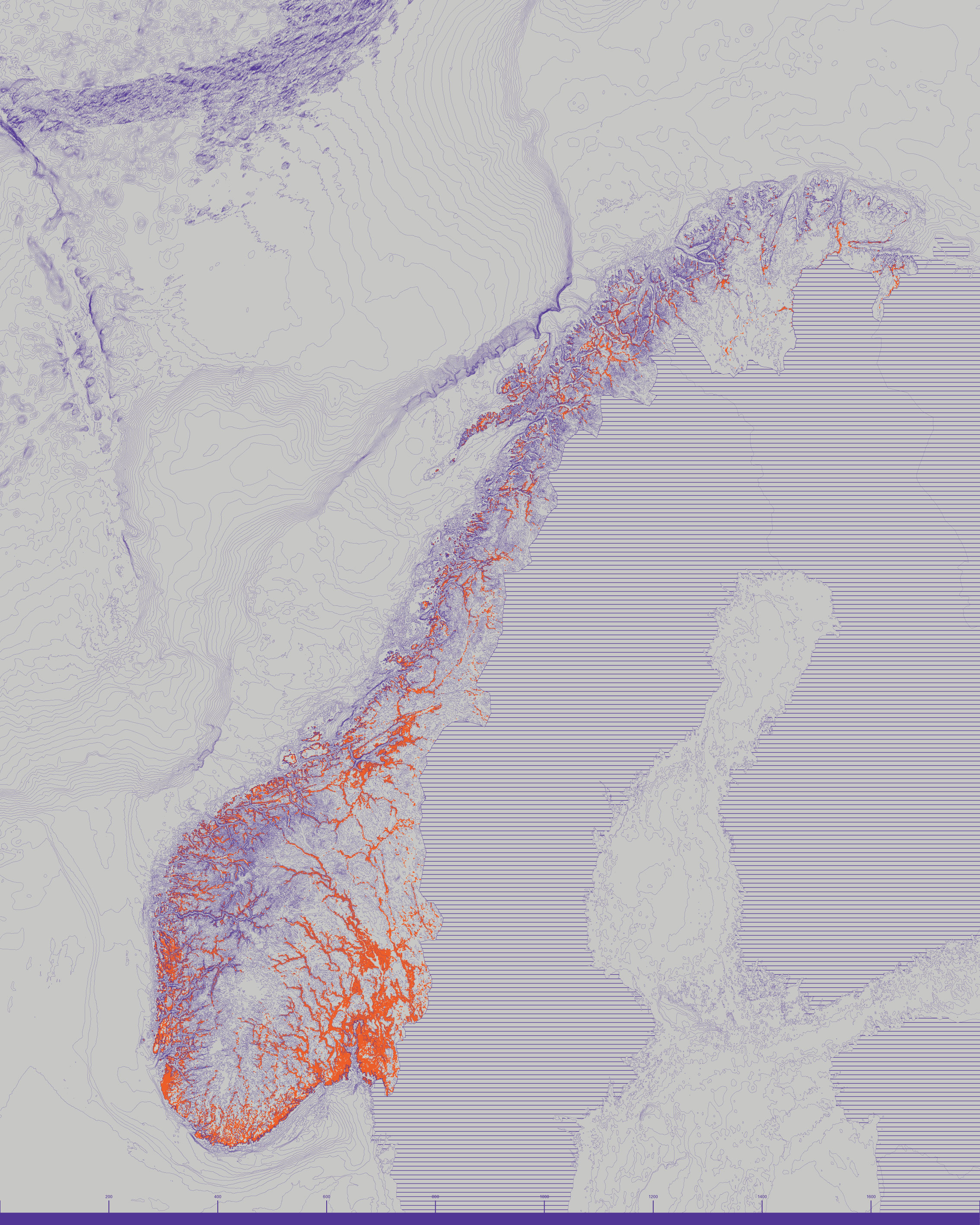
The Dominance of Terrain
The particularly difficult terrain of Norway, consisting of countless fjords, mountains, and islands, have long informed how Norwegians live and work. Habitation is largely limited to friendlier parts of the country’s coastline and along its valleys. Likewise, the tourism industry in Norway, is intimately linked to its geological formation and extreme conditions. Through the selection of three sites across the country—Bergen, Kvitfjell, and Andøya—the specificity of the geological conditions of the fjord, the mountain, and the island are addressed. These three sites host thirteen contributions exploring the agency of travel, as the tourism industry is a likely new focal point in post-petroleum Norway.
A. Bergen
B. Kvitfjell
C. Andøya
A. Bergen
B. Kvitfjell
C. Andøya
From Natural Resources to Tourism



Extraction Exit
Spending Kronen
Attracting Dollars, Euros, and Yuans
While the petroleum industry continues to be the cornerstone of the Norwegian economy, amounting to 18% of the country’s GDP, Norway has drastically reduced the extraction of other natural resources like stones, metals, and minerals. The shrinking mining industry now extracts these resources in only 15% of the available deposits.
The majority of touristic consumption comes from Norwegians themselves. The prefered local tourist destinations are largely dependent on available infrastructures and their connection to major cities, which accommodates a prevalent culture of second homes in Norway. Notably the mountainous east of the country is especially beloved by tourists from Norway.
In addition to a steady growth of domestic tourism in recent years, there is an especially strong increase in the influx of foreign visitors. While Northern European countries arrive by various means including cars, ferries, and trains, the vast majority of international tourists take a plane to Norway. By far the most popular destinations for foreign travellers are Fjord Norway and capital Oslo.

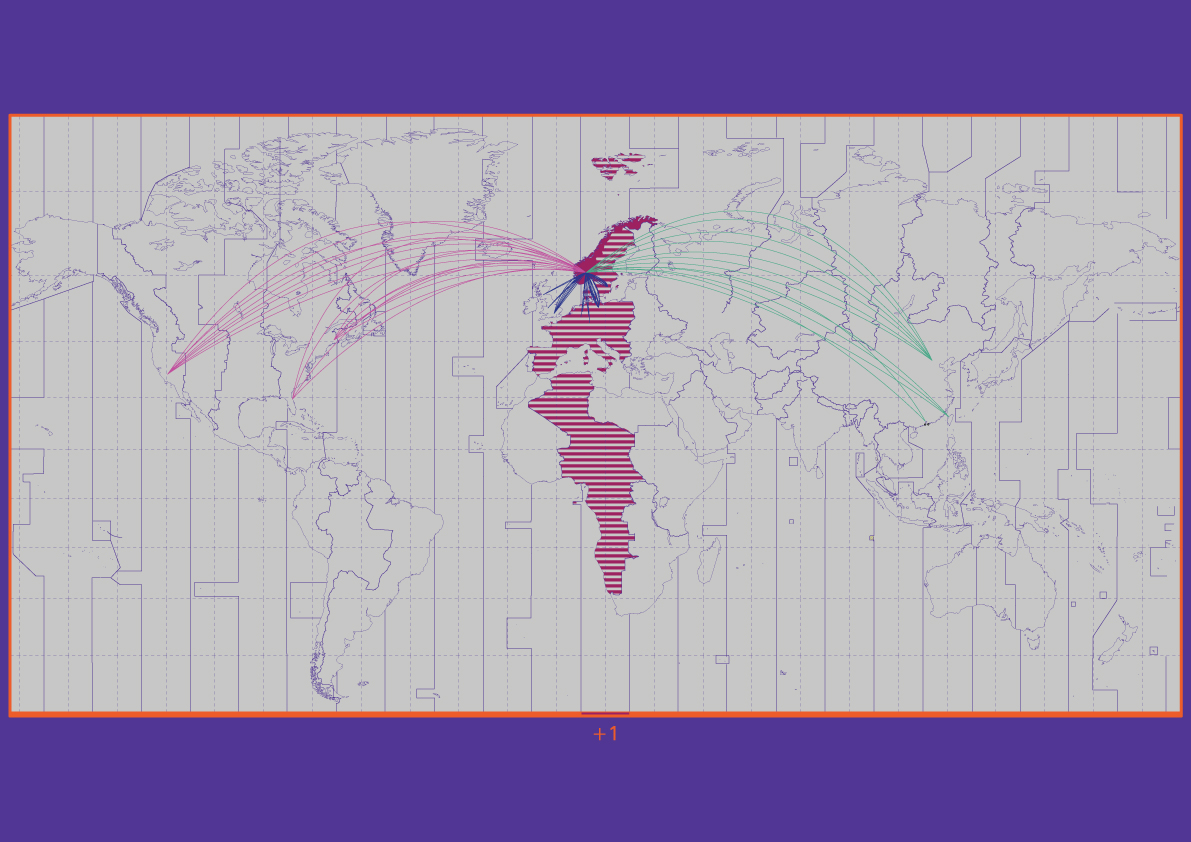
Destination: Norway
The Present Condition in 2020
With over ten million overnight stays by foreign visitors, a total expenditure of 1.4 billion euros is reached. Taking into account the number of these overnight stays, and the average daily expenditure per person, Germans are the tourists that spend most money in Norway. They are followed by American, Chinese, British, and Swedish tourists respectively.
The Vision of The Roadmap Towards Sustainable Travel and Tourism*
According to the Roadmap: Towards Sustainable Travel and Tourism in Norway, the goal of the Norwegian government is to offer travel experiences with lower greenhouse gas emissions. In addition to stimulating greener modes of transportation to replace short-haul flights, longer stays - and thereby higher expenditures - are encouraged.
Thirteen contributions exploring the agency of travel across three sites
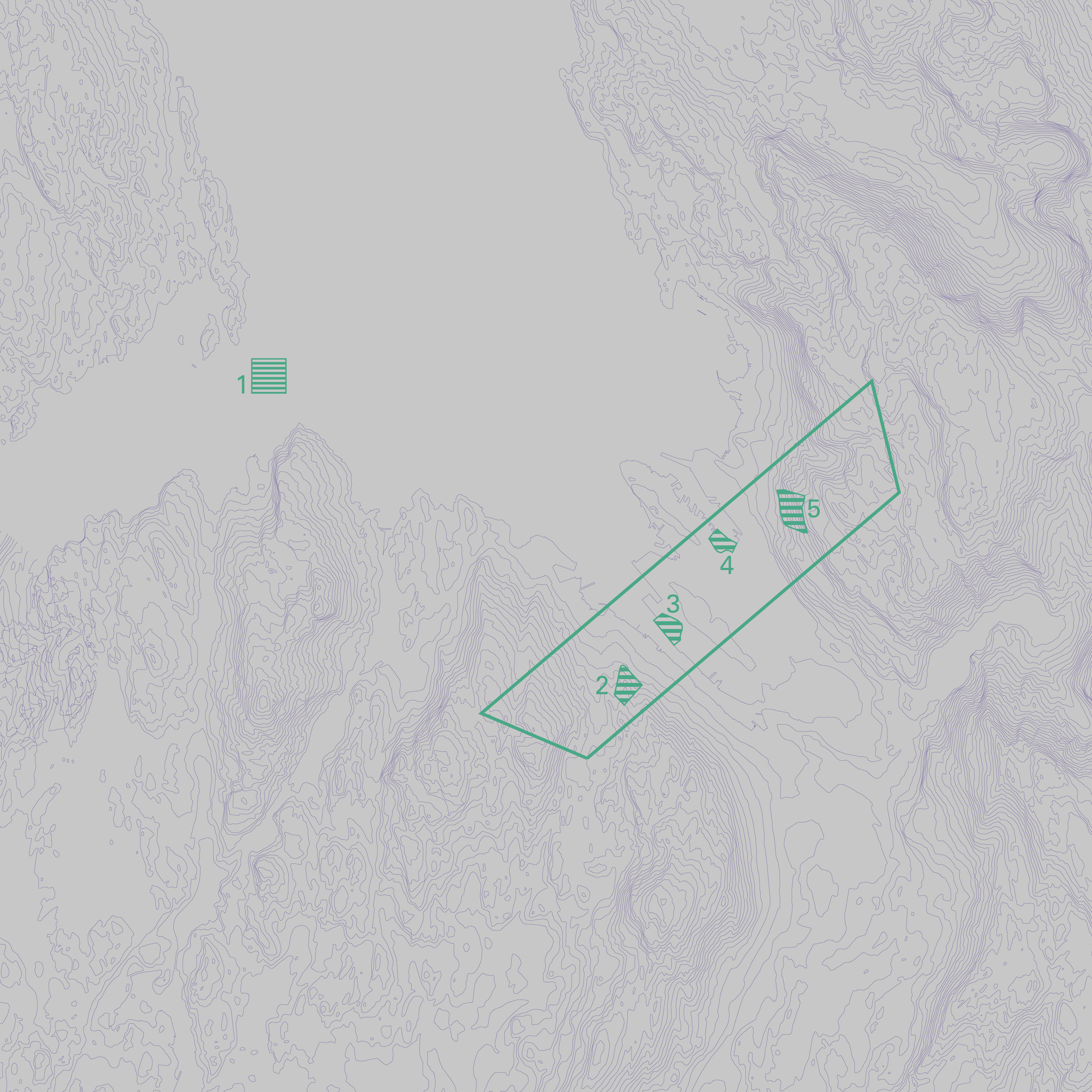


Bergen: The Fjord
1. The Buffer Zone by Marco Fusco
2. Another Storey by Theodora Gelali
3. At The Circus by Jack Garay
4. The BAI by Marianthi Papangelopoulou
5. The Pixelated Ministry of Things by Gent Shehu
4. The BAI by Marianthi Papangelopoulou
5. The Pixelated Ministry of Things by Gent Shehu
Kvitfjell: The Mountain
6. The Norwegian Catalog House by Sheng-Hao Hsu
7. The Second Cabin by Felipe Quintero
8. Non-stop Landscape by Shaiwanty Gupta
9. Plug and Play by Siyuan Wang
7. The Second Cabin by Felipe Quintero
8. Non-stop Landscape by Shaiwanty Gupta
9. Plug and Play by Siyuan Wang
Andøya: The Island
10. A Tourist Trap by Daniella Camarena
11. Sightseeing Outer Space by Santiago Ardila
12. The Official in Residence by Stef DIngen
13. A Place to Land by Juan Benavides
11. Sightseeing Outer Space by Santiago Ardila
12. The Official in Residence by Stef DIngen
13. A Place to Land by Juan Benavides
The starting points from which the Norwegian tourism industry at large is understood

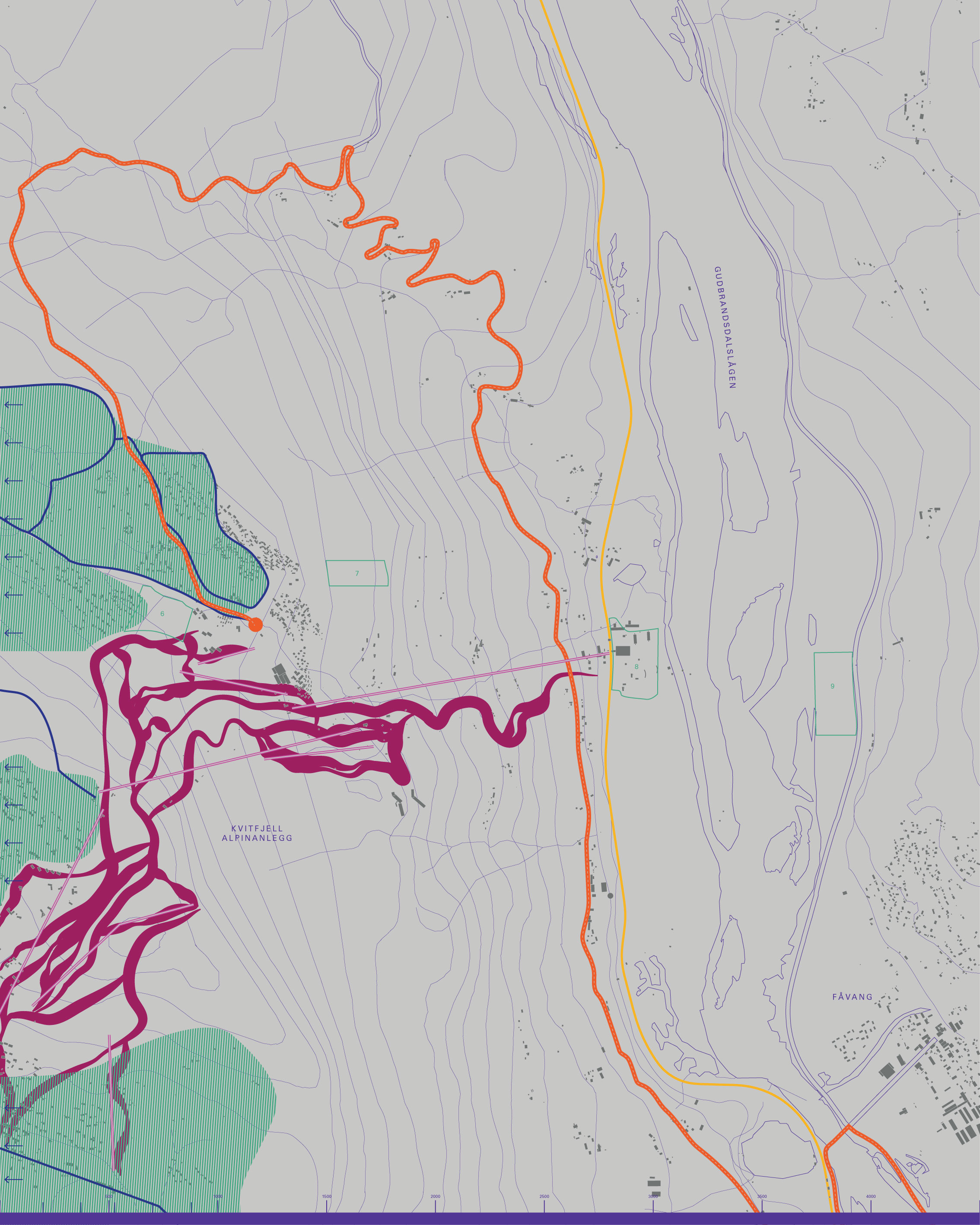

Bergen: The Passenger Effect
Kvitfjell: The Second Home Effect
Andøya: The Remoteness Efffect
With over half a million incoming cruise passengers and the arrival of hundreds of ships every year, Bergen’s cruise port is the largest in Norway, and one of the most popular cruise destinations in Europe. Two thirds of Norwegians living in touristic coastal cities like Bergen are discontented with this continuous invasion of cruise tourists, mentioning littering and the harmful environmental impact of the gigantic ships’ emissions as their chief concerns.
The thriving and modern ski resort of Kvitfjell is an invention courtesy of the 1994 Winter Olympics in Lillehammer. The Olympic sports infrastructure and direct connection to Oslo, have since caused large numbers of Norwegians to acquire a second home there. Notably, the historic lack of a planning framework in place, and the recent surge of these second home investments following Norway’s economic growth and increased mobility, have led to a sprawl of these periodically inhabited homes across this mountainous area.
The remote island of Andoya, located within the arctic circle, has recently started to embrace the tourism industry as a means to compensate for the loss of jobs of the diminishing whaling and fishing industries. Relying heavily on the appeal of the natural environment, conservation of this particular landscape is crucial, and informs the fine line to be thread here. In addition to the conservation question, the possibility of seeing aurora borealis and the presence of an active space center takes the notion of remoteness even further.
Bergen:
The Fjords are Flooding
(The transportation sector)
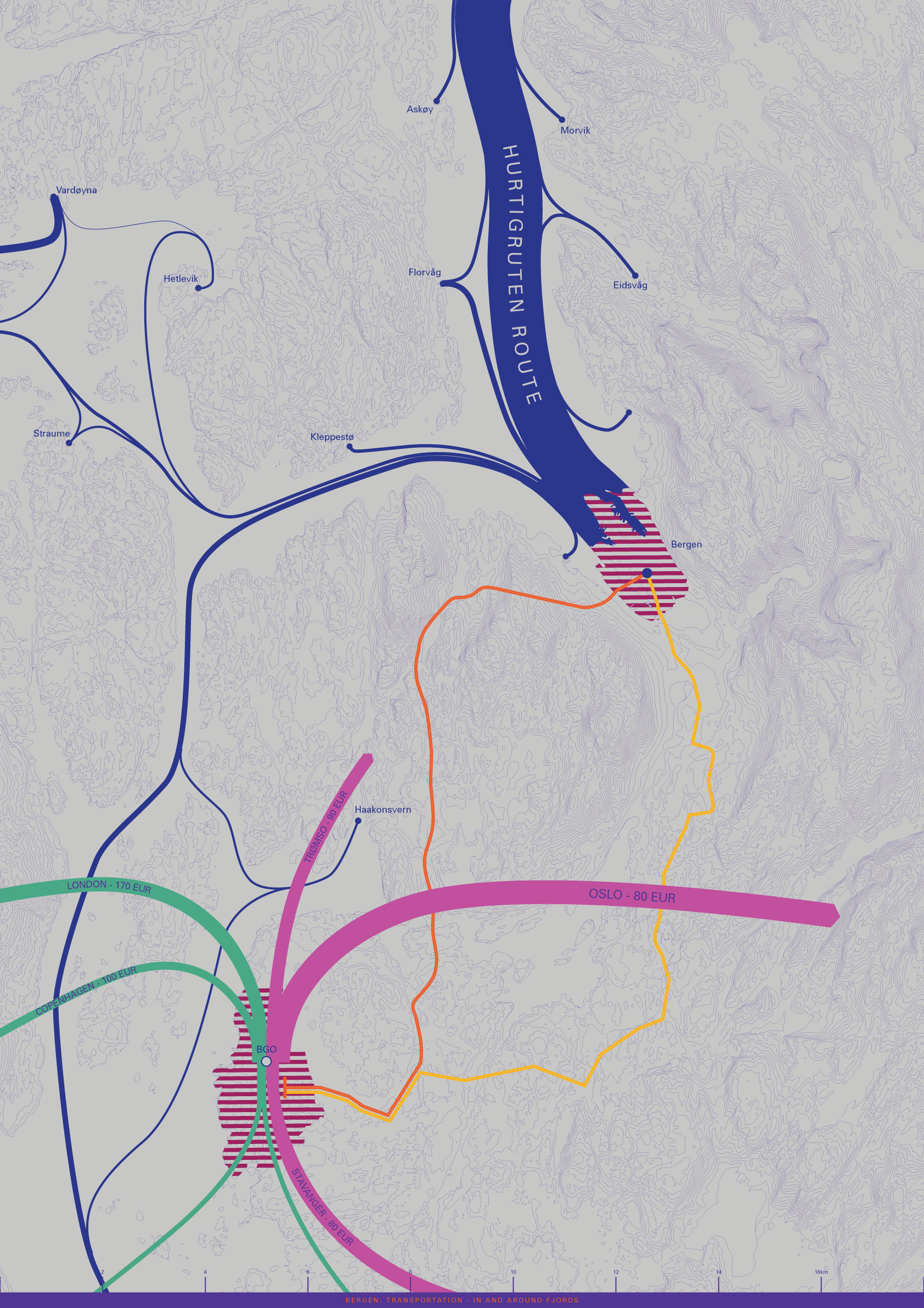
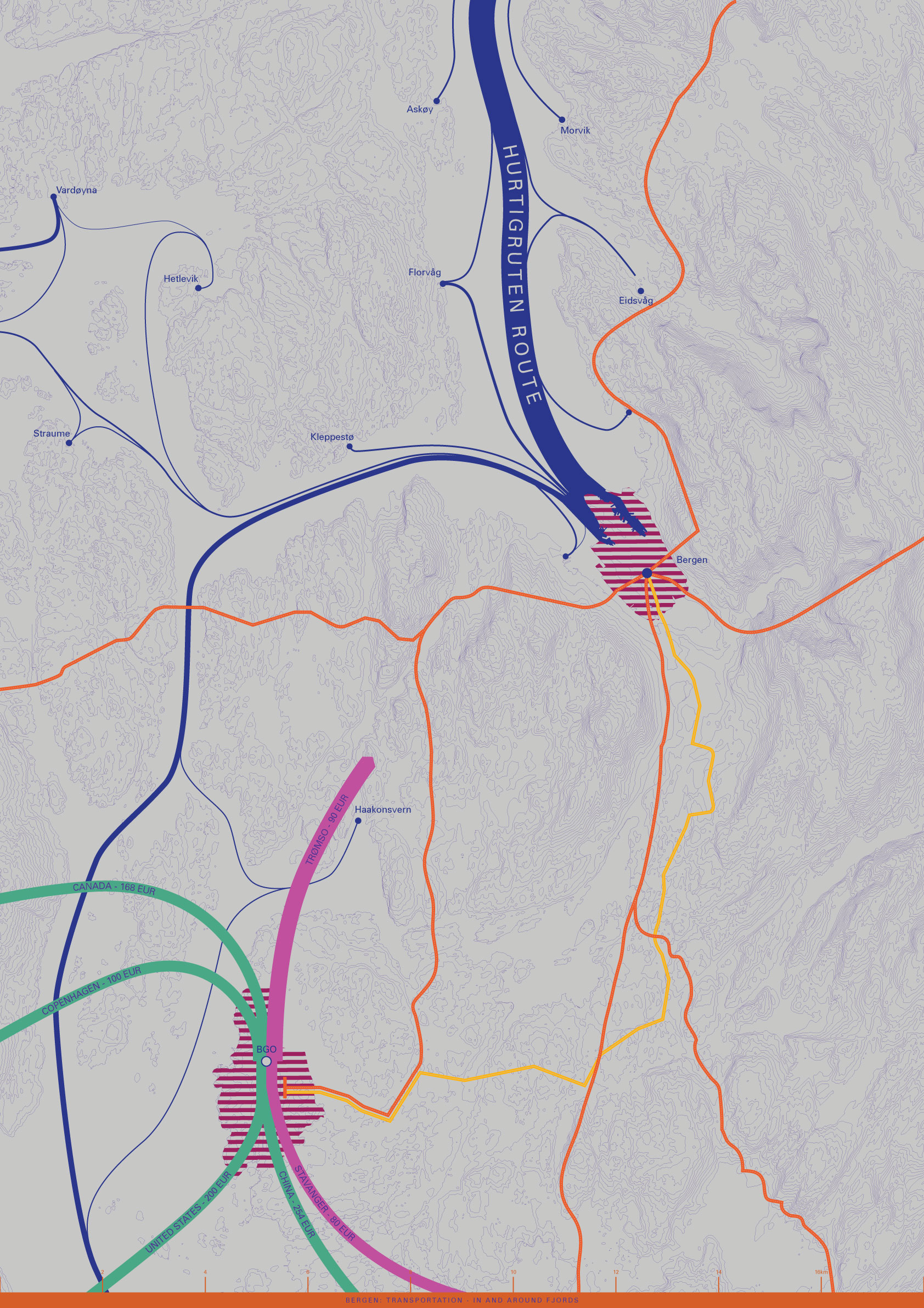

The Present Condition in 2020
A hundred and twenty five years ago, the Hurtigruten line started its maritime connection called coastal voyage from Bergen to Kirkenes. Today many more ships visit the city bringing up to eight thousand cruise passengers in on a busy day. Additionally, Bergen’s airport is the second largest airport in Norway welcoming six million people in 2018, sixty percent of which were Norwegians.
A hundred and twenty five years ago, the Hurtigruten line started its maritime connection called coastal voyage from Bergen to Kirkenes. Today many more ships visit the city bringing up to eight thousand cruise passengers in on a busy day. Additionally, Bergen’s airport is the second largest airport in Norway welcoming six million people in 2018, sixty percent of which were Norwegians.
The Vision of The Roadmap Towards Sustainable Travel and Tourism*
In accordance with the Roadmap: Towards Sustainable Travel and Tourism in Norway, the emissions of transportation should be lowered. Following this, the polluting Hurtigruten line will be partly replaced by the planned expansion of the E39 coastal highway. The further stimulation of travel by train brings down the number of domestic flights.
In accordance with the Roadmap: Towards Sustainable Travel and Tourism in Norway, the emissions of transportation should be lowered. Following this, the polluting Hurtigruten line will be partly replaced by the planned expansion of the E39 coastal highway. The further stimulation of travel by train brings down the number of domestic flights.
The Speculative Scenario Towards 2050
???
???
Accommodating Hospitality
(The accommodation sector)
(The accommodation sector)
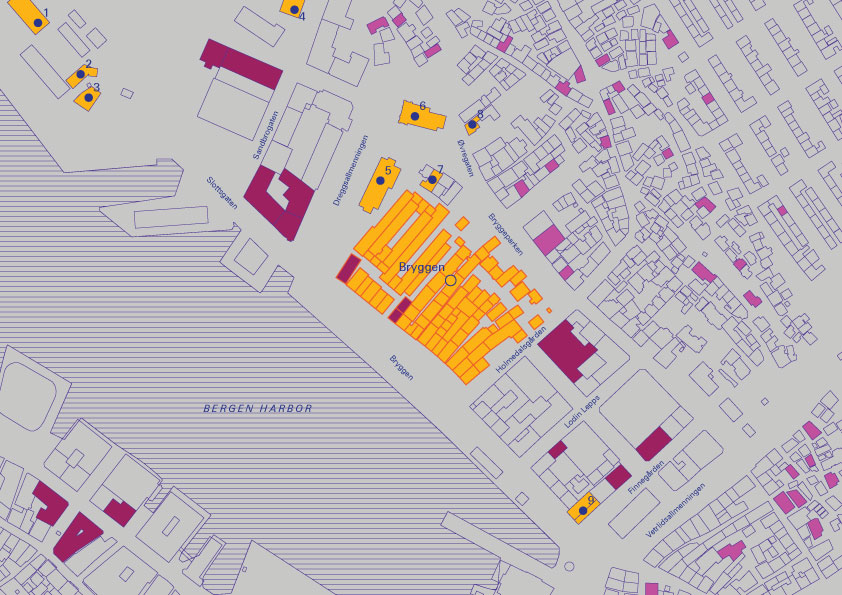
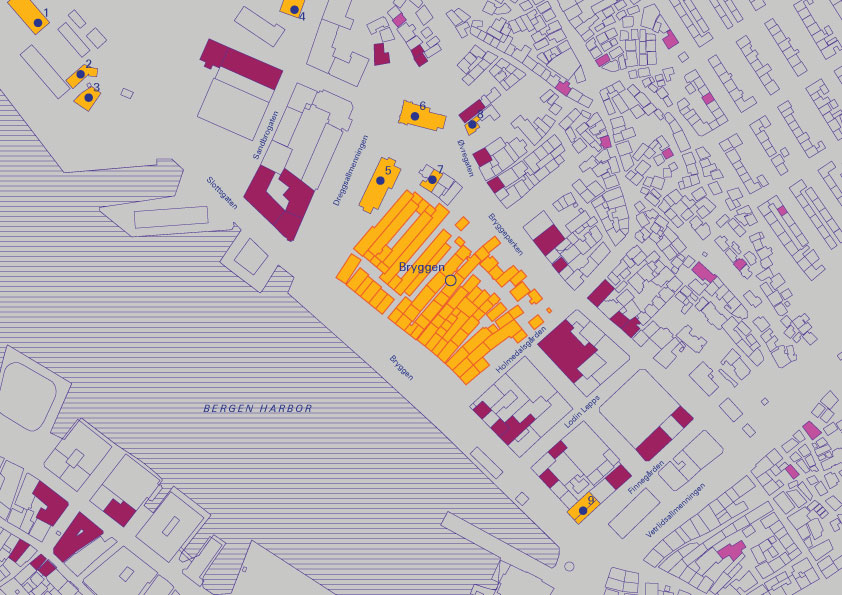
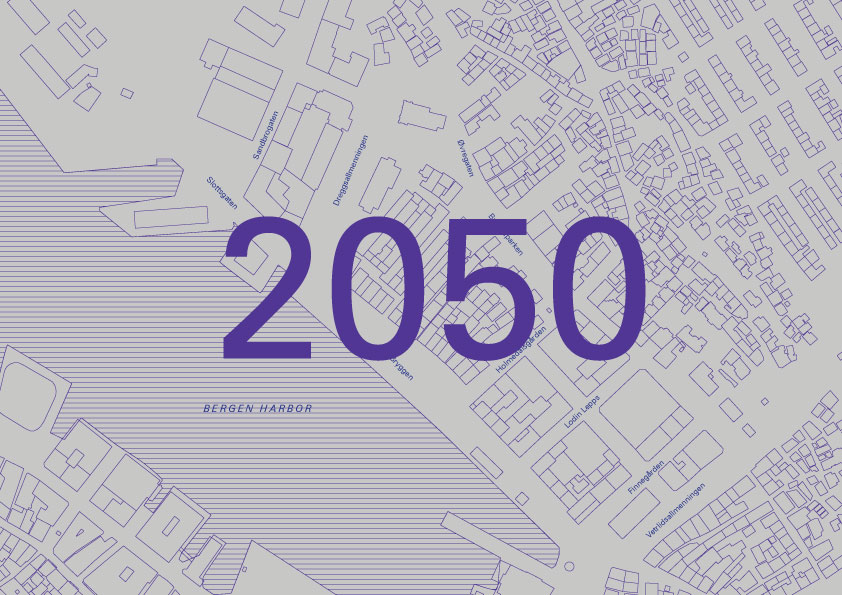
The Present Condition in 2020
Limited by the shortness of their stays, cruise tourists swarm around a limited number of Bergen’s chief attractions, like the Bryggen UNESCO world heritage site, the KODE museums, and the Fleibanen funicular. Bergen has seen a rise in different types of accommodation in proximity to these touristic clusters, thus affecting local land use patterns.
Limited by the shortness of their stays, cruise tourists swarm around a limited number of Bergen’s chief attractions, like the Bryggen UNESCO world heritage site, the KODE museums, and the Fleibanen funicular. Bergen has seen a rise in different types of accommodation in proximity to these touristic clusters, thus affecting local land use patterns.
The Vision of The Roadmap Towards Sustainable Travel and Tourism*
According to the Roadmap: Towards Sustainable Travel and Tourism in Norway, longer stays throughout the year are aimed for, while also preventing a detrimental impact to local communities. In terms of accommodation, a more balanced spread throughout Bergen, should diminish pressure on particularly touristic parts of the city.
According to the Roadmap: Towards Sustainable Travel and Tourism in Norway, longer stays throughout the year are aimed for, while also preventing a detrimental impact to local communities. In terms of accommodation, a more balanced spread throughout Bergen, should diminish pressure on particularly touristic parts of the city.
The Speculative Scenario Towards 2050
???
???
Kvitfjell:
Timber Corridor
(The transportation sector)
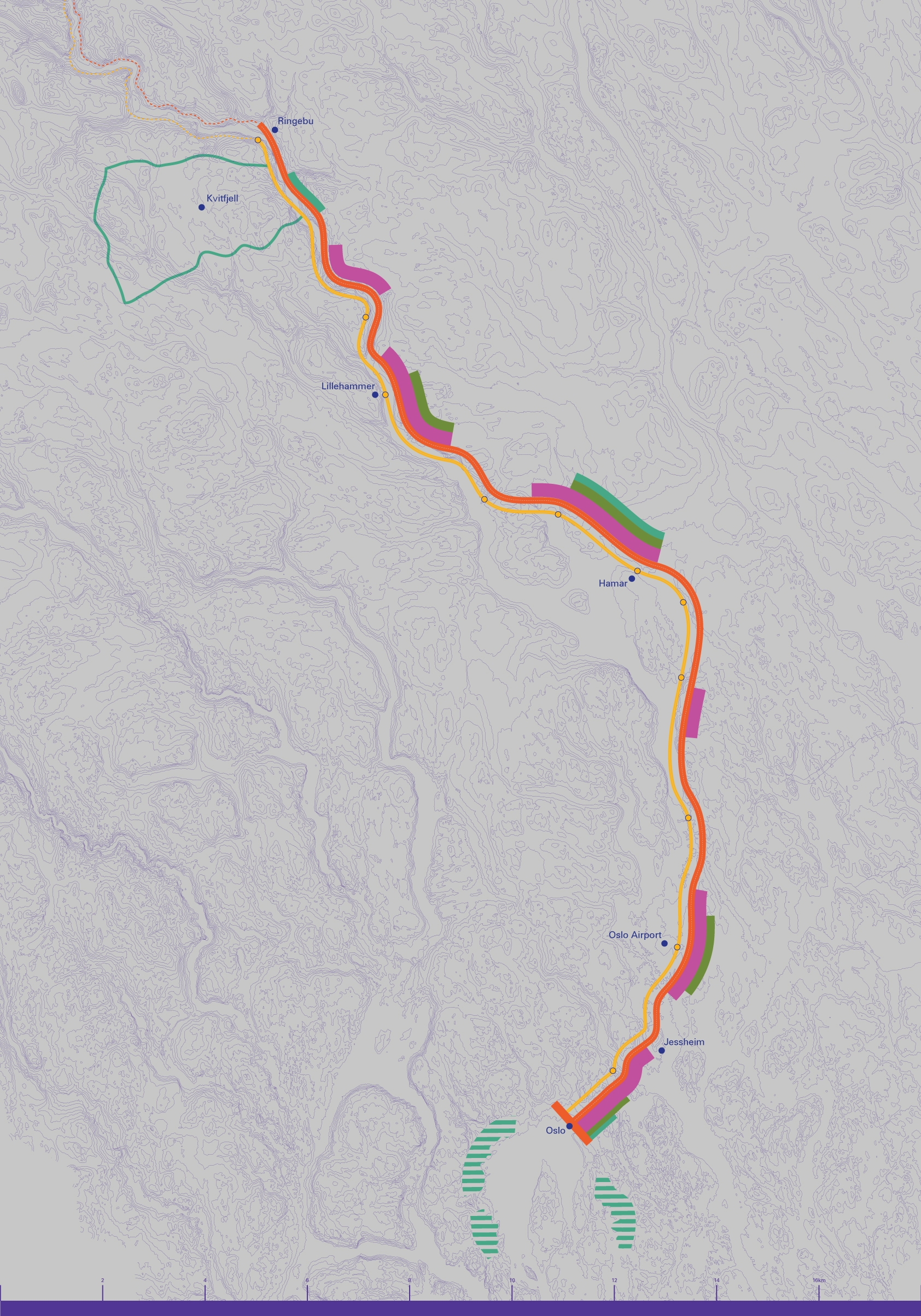
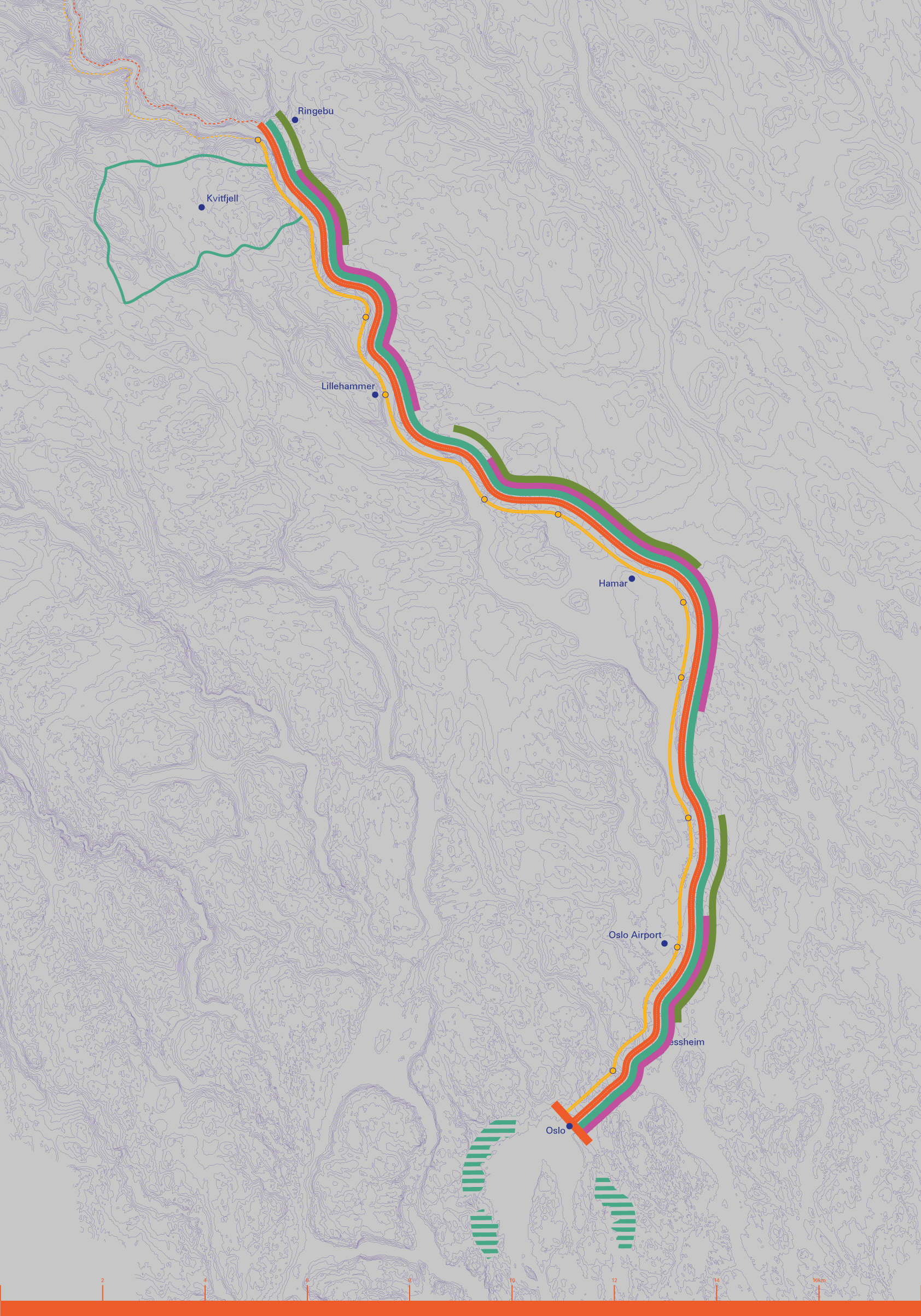

The Present Condition in 2020
As a result of Eastern Norway’s tradition of timber production, the mountain’s valleys naturally became a transportation corridor that connects Oslo to the area’s ski resorts. Still today, along this route, one can find a high concentration of construction companies, woodworking material suppliers, and timber trade enterprises.
As a result of Eastern Norway’s tradition of timber production, the mountain’s valleys naturally became a transportation corridor that connects Oslo to the area’s ski resorts. Still today, along this route, one can find a high concentration of construction companies, woodworking material suppliers, and timber trade enterprises.
The Vision of The Roadmap Towards Sustainable Travel and Tourism*
The Roadmap: Towards Sustainable Travel and Tourism in Norway, underlines the value of local produce and the importance of innovation and product development. A strengthening of the existing transportation corridor benefits both the freight of timber companies and the passenger movements of tourists between the city of Oslo and Kvitfjell, also enabling effective and controlled development of construction activities.
The Roadmap: Towards Sustainable Travel and Tourism in Norway, underlines the value of local produce and the importance of innovation and product development. A strengthening of the existing transportation corridor benefits both the freight of timber companies and the passenger movements of tourists between the city of Oslo and Kvitfjell, also enabling effective and controlled development of construction activities.
The Speculative Scenario Towards 2050
???
???
The Colonies of Kvitfjell
(The accommodation sector)
(The accommodation sector)
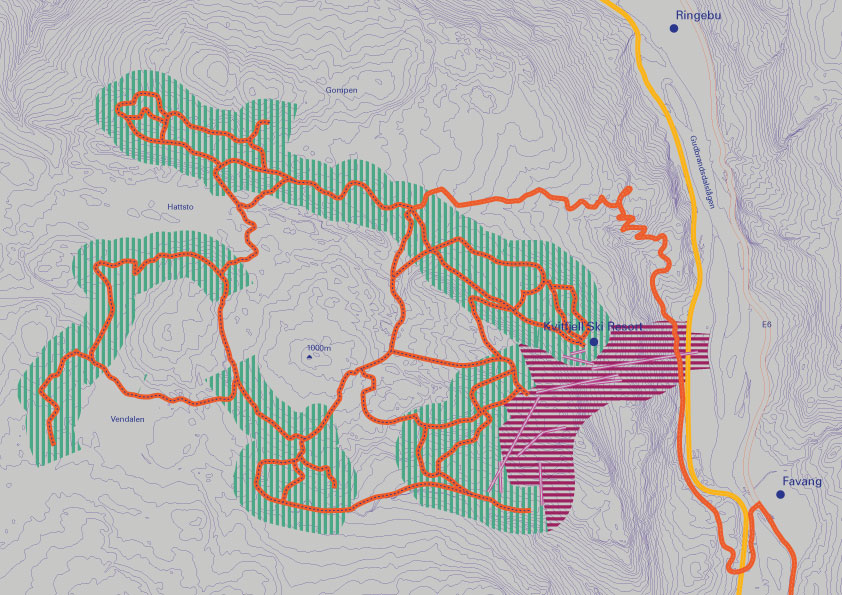

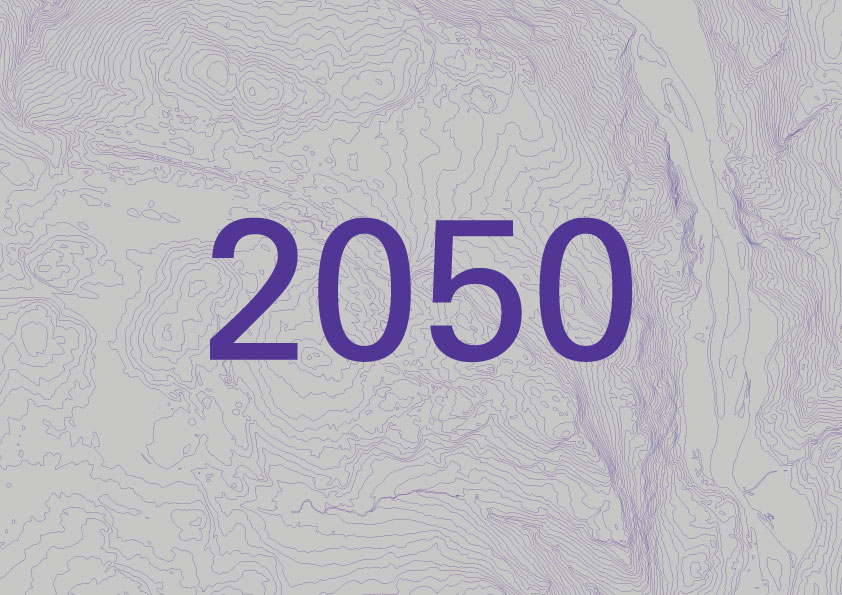
The Present Condition in 2020
The sprawl of second homes around Kvitfjell, is concentrated around the ski slopes and cross country ski trails up in the mountains. Scattered around forty percent of this artificial landscape of over eighty five kilometers of ski infrastructure, the development of second homes continues to ruthlessly spread in a largely unplanned manner.
The sprawl of second homes around Kvitfjell, is concentrated around the ski slopes and cross country ski trails up in the mountains. Scattered around forty percent of this artificial landscape of over eighty five kilometers of ski infrastructure, the development of second homes continues to ruthlessly spread in a largely unplanned manner.
The Vision of The Roadmap Towards Sustainable Travel and Tourism*
The Roadmap: Towards Sustainable Travel and Tourism in Norway acknowledges the pressure on certain areas of Norway from the tourism industry. Kvitfjell is located in one such area. By putting restrictions regarding second home developments in place, undesirable further sprawl is prevented. Future developments are directed towards a more clustered approach, thus spreading this type of tourism more homogeneously.
The Roadmap: Towards Sustainable Travel and Tourism in Norway acknowledges the pressure on certain areas of Norway from the tourism industry. Kvitfjell is located in one such area. By putting restrictions regarding second home developments in place, undesirable further sprawl is prevented. Future developments are directed towards a more clustered approach, thus spreading this type of tourism more homogeneously.
The Speculative Scenario Towards 2050
???
???
Andøya:
Remote Accessibility
(The transportation sector)

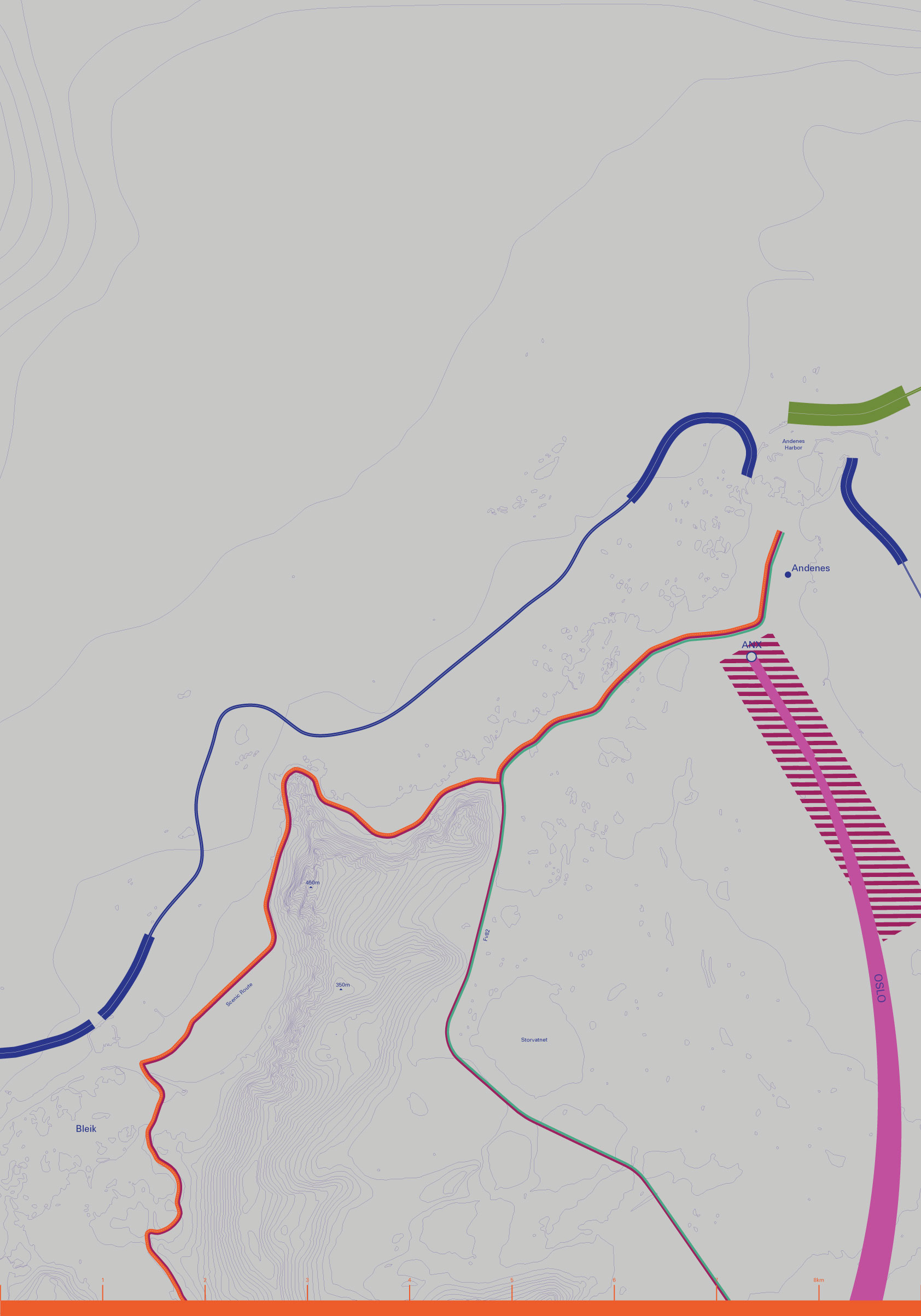
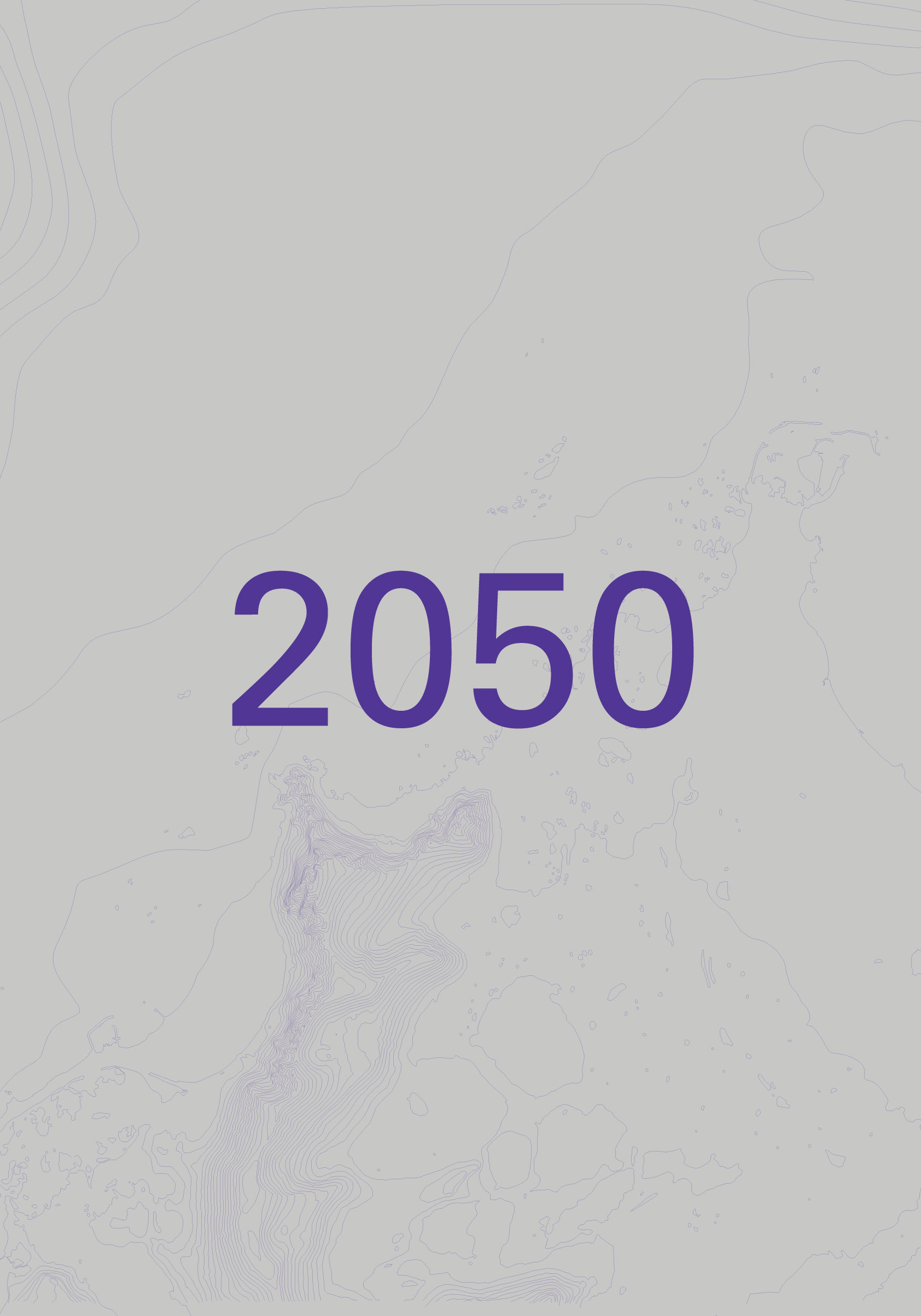
The Present Condition in 2020
Various modes of transportation on and to the remote island of Andøya come with different experiences. The scenic route alongside its west coast, provides tourists with a journey by car, bus, or bike, that is arguably as pleasant as the remoteness of the island itself. Ferry networks and flight routes connect the island to the mainland, responding to the seasonal demand of incoming visitors.
Various modes of transportation on and to the remote island of Andøya come with different experiences. The scenic route alongside its west coast, provides tourists with a journey by car, bus, or bike, that is arguably as pleasant as the remoteness of the island itself. Ferry networks and flight routes connect the island to the mainland, responding to the seasonal demand of incoming visitors.
The Vision of The Roadmap Towards Sustainable Travel and Tourism*
According to the Roadmap: Towards Sustainable Travel and Tourism in Norway tourism-related transportation should come with lower carbon emissions. Polluting short-haul flights connecting Andøya to Bodø and Tromsø are discouraged, while journeys via clean cars and ferries are stimulated. As tourism is spread more evenly throughout the year, Andøya’s connections to mainland Norway become more stable.
According to the Roadmap: Towards Sustainable Travel and Tourism in Norway tourism-related transportation should come with lower carbon emissions. Polluting short-haul flights connecting Andøya to Bodø and Tromsø are discouraged, while journeys via clean cars and ferries are stimulated. As tourism is spread more evenly throughout the year, Andøya’s connections to mainland Norway become more stable.
The Speculative Scenario Towards 2050
???
???
Inn Andøya
(The accommodation sector)
(The accommodation sector)
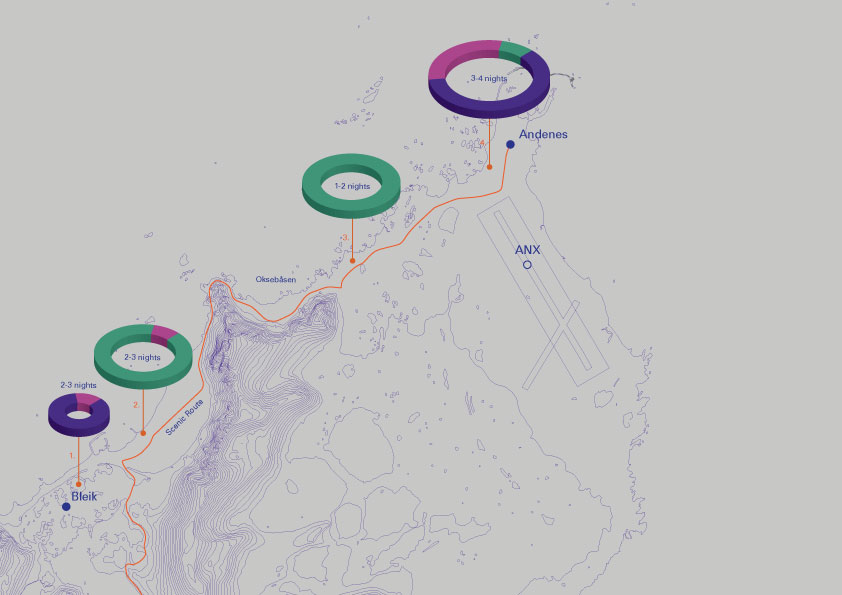

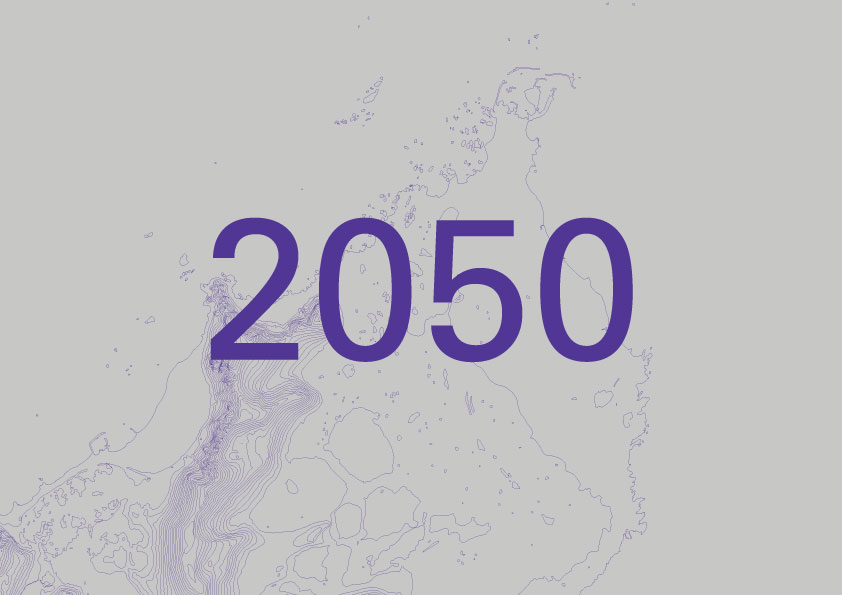
The Present Condition in 2020
A relatively small demand for accommodation in northern Andøya means that the offer is limited to a few hotels and apartments in Bleik and Andenes, as well as to a number of camping areas with a combined hundred places on the route in between. Constrained by the restrictions of environmentally protected zones, only limited further development is allowed.
A relatively small demand for accommodation in northern Andøya means that the offer is limited to a few hotels and apartments in Bleik and Andenes, as well as to a number of camping areas with a combined hundred places on the route in between. Constrained by the restrictions of environmentally protected zones, only limited further development is allowed.
The Vision of The Roadmap Towards Sustainable Travel and Tourism*
According to the Roadmap: Towards Sustainable Travel and Tourism in Norway diversifying modes of accommodation helps in bringing in specific types of tourists, and potentially in extended stays. As a growing tourist destination, Andøya focuses on increasing the overnight stays per trip, therefore encouraging tourist spending. Growth is to be found not in volume, but in quality of stays.
According to the Roadmap: Towards Sustainable Travel and Tourism in Norway diversifying modes of accommodation helps in bringing in specific types of tourists, and potentially in extended stays. As a growing tourist destination, Andøya focuses on increasing the overnight stays per trip, therefore encouraging tourist spending. Growth is to be found not in volume, but in quality of stays.
The Speculative Scenario Towards 2050
???
???
The Low, Shoulder, and High touristic seasons across the three sites



Bergen
A. Cruise Ships
B. KODE Art Musem
C. Bryggen UNESCO World Heritage Site
D. Fløibanen Funicular
B. KODE Art Musem
C. Bryggen UNESCO World Heritage Site
D. Fløibanen Funicular
Kvitfjell
A. Ski slopes
B. Cross Country
C. Camping
D. Hiking
B. Cross Country
C. Camping
D. Hiking
Andøya
A. Whale Watching
B. Puffin Safari
C. Spaceship Aurora
D. Aurorea Borealis
B. Puffin Safari
C. Spaceship Aurora
D. Aurorea Borealis
*** The yearly division of the year according to tourist activities at a particular place: high season, low season, and shoulder season, respectively indicating high, low, and medium activity. Depending on parameters such as accessibility and the type of tourism, these seasons may differ between various parts of a country. The seasons do not solely relate to weather conditions.

The Four
Seasons
Friday, August 24, 2020
A collective film about eight examples of
the tourism industry in Norway.


Oil Economy
(Tourism Industry Sector: Connected Services)
As a country formed of various stones, metals, and minerals, Norway has a long tradition of extracting natural resources. It is—however—the 1969 discovery of oil and gas reserves that has produced Norway's unprecedented wealth. Now amounting to a quarter of the country's GDP, the petroleum industry has been the cornerstone of the Norwegian economy and welfare state for the past few decades. While the petroleum industry is still an essential pillar supporting Norway’s prosperity, it is anticipated that in the near future the country will move beyond the extraction of oil and gas. A new focal point for future economic development is likely the tourism industry, which is a costly transition involving the construction of a vast infrastructure to be able to transport, accommodate, feed, and entertain tourists, and to generally support this new economy. If it were not for Norway’s vast oil wealth, such a targeted change would probably not be possible.
(Tourism Industry Sector: Connected Services)
As a country formed of various stones, metals, and minerals, Norway has a long tradition of extracting natural resources. It is—however—the 1969 discovery of oil and gas reserves that has produced Norway's unprecedented wealth. Now amounting to a quarter of the country's GDP, the petroleum industry has been the cornerstone of the Norwegian economy and welfare state for the past few decades. While the petroleum industry is still an essential pillar supporting Norway’s prosperity, it is anticipated that in the near future the country will move beyond the extraction of oil and gas. A new focal point for future economic development is likely the tourism industry, which is a costly transition involving the construction of a vast infrastructure to be able to transport, accommodate, feed, and entertain tourists, and to generally support this new economy. If it were not for Norway’s vast oil wealth, such a targeted change would probably not be possible.
Flights & Sea Level Rise
(Tourism Industry Sector: Transportation)
The idea of remoteness, and the reality of accessibility, form a foundational framework for tourism in Norway, as transportation in a land as big and rugged as this country requires not just a specific set of infrastructures, but also favorable conditions regarding – among others – weather. Nowadays, a network of highways, train tracks, ferry lines, and airports puts the vast majority of the Norwegian land within five kilometers of major infrastructure developments. Even so, an apparent insistence on the use of planes for domestic travel is notable in a country that prides itself on its great reliance on renewable types of electric energy elsewhere. An even greater increase of international air travel in recent years, has contributed to a growth of greenhouse gas emissions by the Norwegian aviation sector of over a hundred percent in the last two decades alone. One can only imagine how the rise of sea water levels as a result of global warming, will impact Norway’s coastline in decades to come.
(Tourism Industry Sector: Transportation)
The idea of remoteness, and the reality of accessibility, form a foundational framework for tourism in Norway, as transportation in a land as big and rugged as this country requires not just a specific set of infrastructures, but also favorable conditions regarding – among others – weather. Nowadays, a network of highways, train tracks, ferry lines, and airports puts the vast majority of the Norwegian land within five kilometers of major infrastructure developments. Even so, an apparent insistence on the use of planes for domestic travel is notable in a country that prides itself on its great reliance on renewable types of electric energy elsewhere. An even greater increase of international air travel in recent years, has contributed to a growth of greenhouse gas emissions by the Norwegian aviation sector of over a hundred percent in the last two decades alone. One can only imagine how the rise of sea water levels as a result of global warming, will impact Norway’s coastline in decades to come.
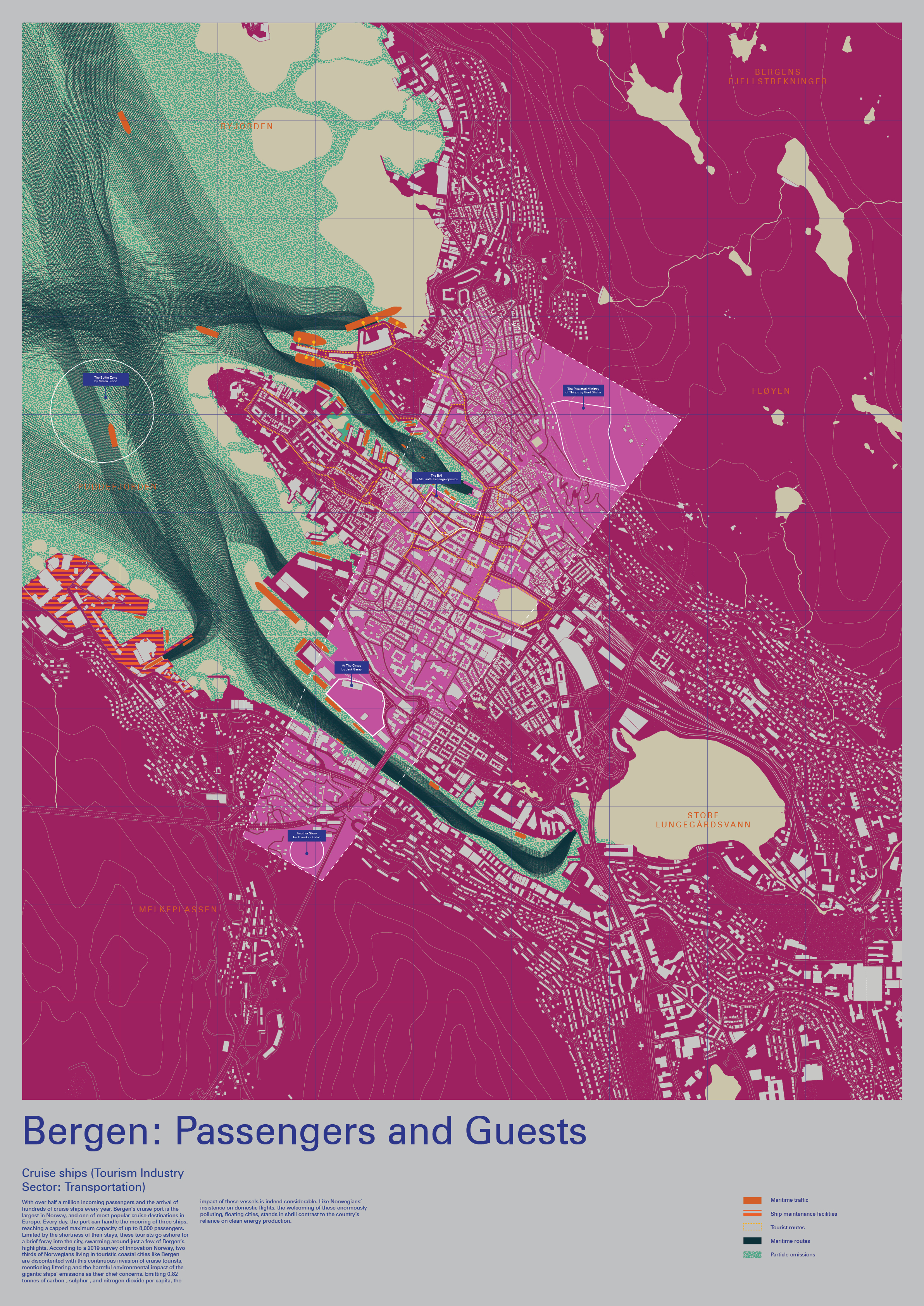
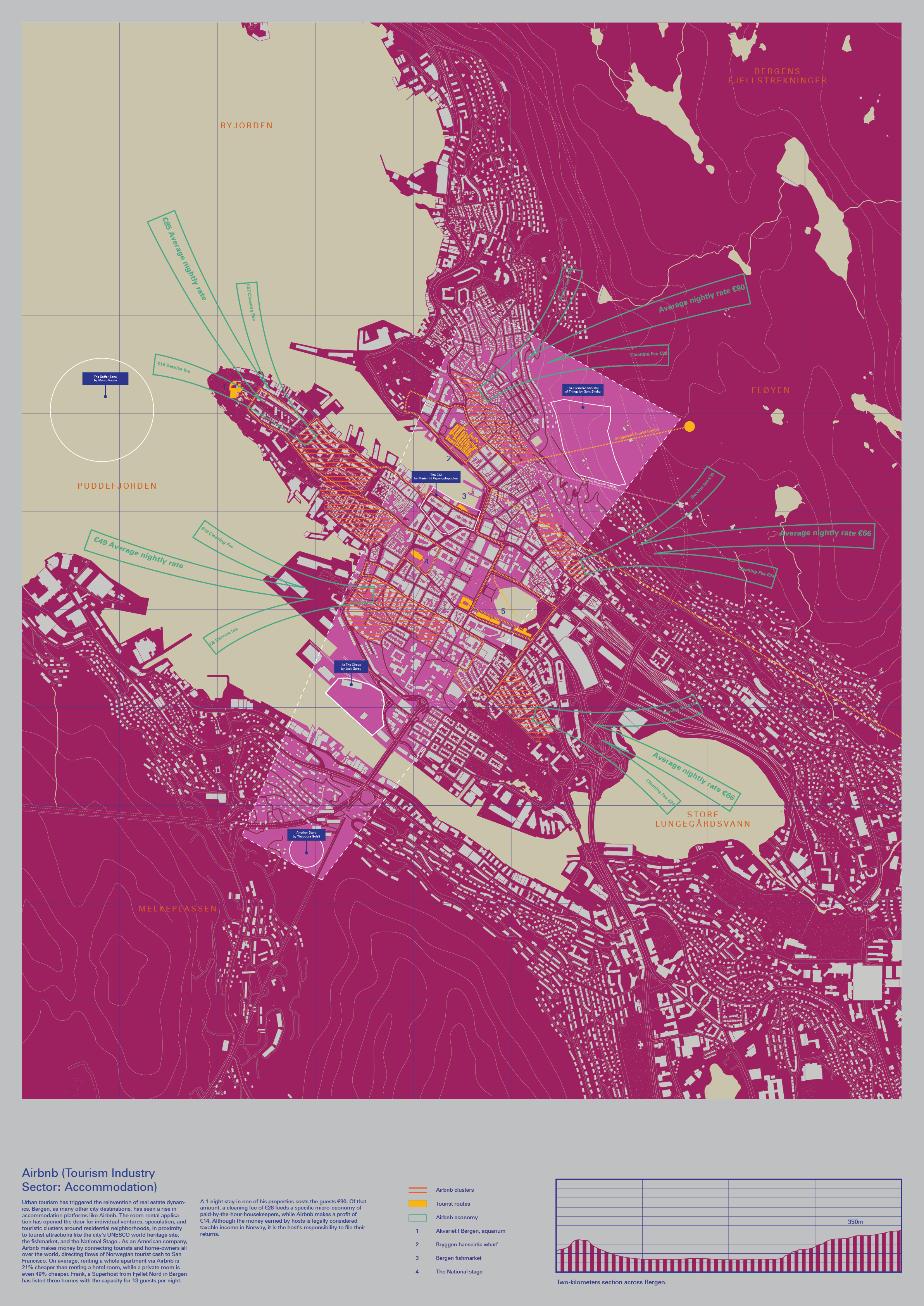
Cruise ships
(Tourism Industry Sector: Transportation)
(Tourism Industry Sector: Transportation)
With over half a million incoming passengers and the arrival of hundreds of cruise ships every year, Bergen’s cruise port is the largest in Norway, and one of most popular cruise destinations in Europe. Every day, the port can handle the mooring of three ships, reaching a capped maximum capacity of up to 8,000 passengers. Limited by the shortness of their stays, these tourists go ashore for a brief foray into the city, swarming around just a few of Bergen’s highlights. According to a 2019 survey of Innovation Norway, two thirds of Norwegians living in touristic coastal cities like Bergen are discontented with this continuous invasion of cruise tourists, mentioning littering and the harmful environmental impact of the gigantic ships’ emissions as their chief concerns. Emitting 0.82 tonnes of carbon-, sulphur-, and nitrogen dioxide per capita, the impact of these vessels is indeed considerable. Like Norwegians’ insistence on domestic flights, the welcoming of these enormously polluting, floating cities, stands in shrill contrast to the country’s reliance on clean energy production.
Airbnb
(Tourism Industry Sector: Accommodation)
Urban tourism has triggered the reinvention of real estate dynamics. Bergen, as many other city destinations, has seen a rise in accommodation platforms like Airbnb. The room-rental application has opened the door for individual ventures, speculation, and touristic clusters around residential neighborhoods, in proximity to tourist attractions like the city’s UNESCO world heritage site, the fishmarket, and the National Stage. As an American company, Airbnb makes money by connecting tourists and home-owners all over the world, directing flows of Norwegian tourist cash to San Francisco. On average, renting a whole apartment via Airbnb is 21% cheaper than renting a hotel room, while a private room is even 49% cheaper. Frank, a Superhost from Fjellet Nord in Bergen has listed three homes with the capacity for 13 guests per night. A 1-night stay in one of his properties costs the guests €90. Of that amount, a cleaning fee of €28 feeds a specific micro-economy of paid-by-the-hour-housekeepers, while Airbnb makes a profit of €14. Although the money earned by hosts is legally considered taxable income in Norway, it is the host’s responsibility to file their returns.
(Tourism Industry Sector: Accommodation)
Urban tourism has triggered the reinvention of real estate dynamics. Bergen, as many other city destinations, has seen a rise in accommodation platforms like Airbnb. The room-rental application has opened the door for individual ventures, speculation, and touristic clusters around residential neighborhoods, in proximity to tourist attractions like the city’s UNESCO world heritage site, the fishmarket, and the National Stage. As an American company, Airbnb makes money by connecting tourists and home-owners all over the world, directing flows of Norwegian tourist cash to San Francisco. On average, renting a whole apartment via Airbnb is 21% cheaper than renting a hotel room, while a private room is even 49% cheaper. Frank, a Superhost from Fjellet Nord in Bergen has listed three homes with the capacity for 13 guests per night. A 1-night stay in one of his properties costs the guests €90. Of that amount, a cleaning fee of €28 feeds a specific micro-economy of paid-by-the-hour-housekeepers, while Airbnb makes a profit of €14. Although the money earned by hosts is legally considered taxable income in Norway, it is the host’s responsibility to file their returns.
A Collective
Project
On architecture and urban design
in relation to the tourism industry in Norway

An Introductory Film on the Collective Theme











Remote Site Documentation of Norway, Bergen, Kvitfjell, and Andøya










Visualized Evidence on Norway’s Geology and Seasonality
On the Collective Theme
Norway—a country formed of various stones, metals, and minerals— has a long tradition of extracting natural resources. It is—however—the 1969 discovery of oil and gas reserves that has produced Norway's unprecedented wealth. While the petroleum industry is still an essential pillar supporting Norway’s prosperity, it is anticipated that in the near future the country will move beyond the extraction of oil and gas. A new focal point for future economic development is likely the tourism industry, arguably one of the world’s largest and expanding industries.While the tourism industry in Norway is already steadily growing—with a strong increase in foreign visitors in recent years—the majority of touristic consumption is from Norwegians themselves. While the government has welcomed and incentivized the growth of the tourism industry at large through marketing campaigns and a lack of tourist taxes until now, similarly one of the major, acknowledged challenges on a national level is the unequal distribution of tourism-related activities across the country, and throughout the year. The Norwegian government proposes a “high yield/low impact” principle to spread and diversify tourism in time, space, and offering.
Thirteen individual contributions are spread across three sites: Bergen, Kvitfjell, and Andøya, each respectively representative of the fjord, the mountain and the island, three geological condition that define tourism in Norway. Structured according to both the meteorological and touristic seasons, each contribution rethinks both the spatial relationships between the tourism industry’s “front and back stages,” along with its “high yield and low impact” on the built environment.
On the Individual Contributions
Thirteen individual architectural contributions—a flagship store, an architecture institute, a ministry, a cruise terminal, a catalog house, a train station, a charging station, a cabin, a royal palace, a hotel, a visitor center, a space complex, and an itinerant circus—will be designed in relation to the tourism industry in Norway.Teaching Team
Salomon Frausto, Ludo Groen, and Benjamin Groothuijse
Thesis Examination Committee
Dick van Gameren, Kees Kaan, Daniel Rosbottom, Paul Vermeulen, and Nathalie de VriesGuest Critics
Anne Kockelkorn, Jonas Nørsted, Ute Schneider, and Léa-Catherine Szacka.
Students
Santiago Ardila, Juan Benavides, Daniella Camarena, Stef Dingen, Marco Fusco, Jack Garay Arauzo, Theodora Gelali, Shaiwanti Gupta, Sheng-Hao Hsu,Marianthi Papangelopoulou, Felipe Quintero, Gent Shehu, and Siyuan Wang.


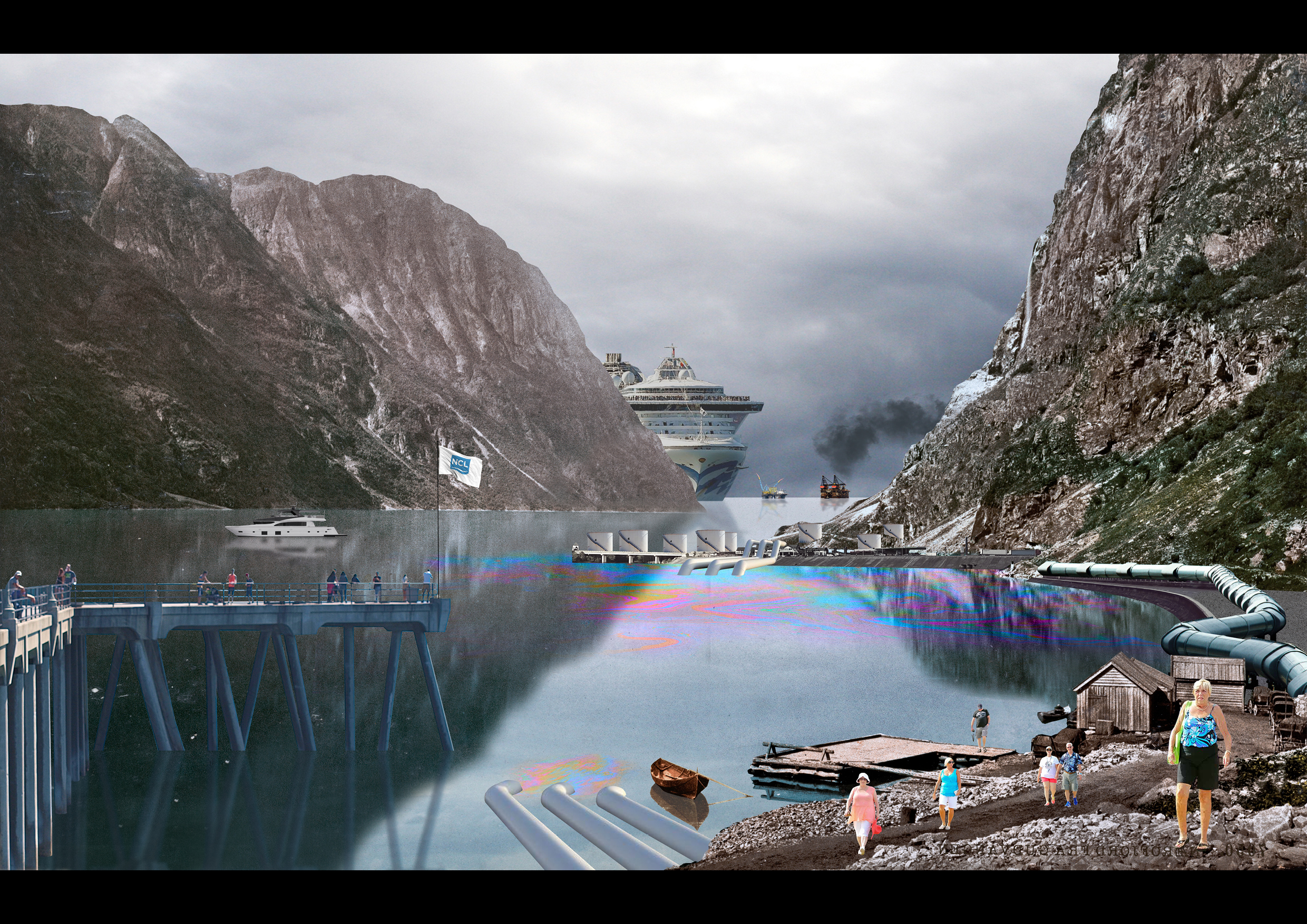
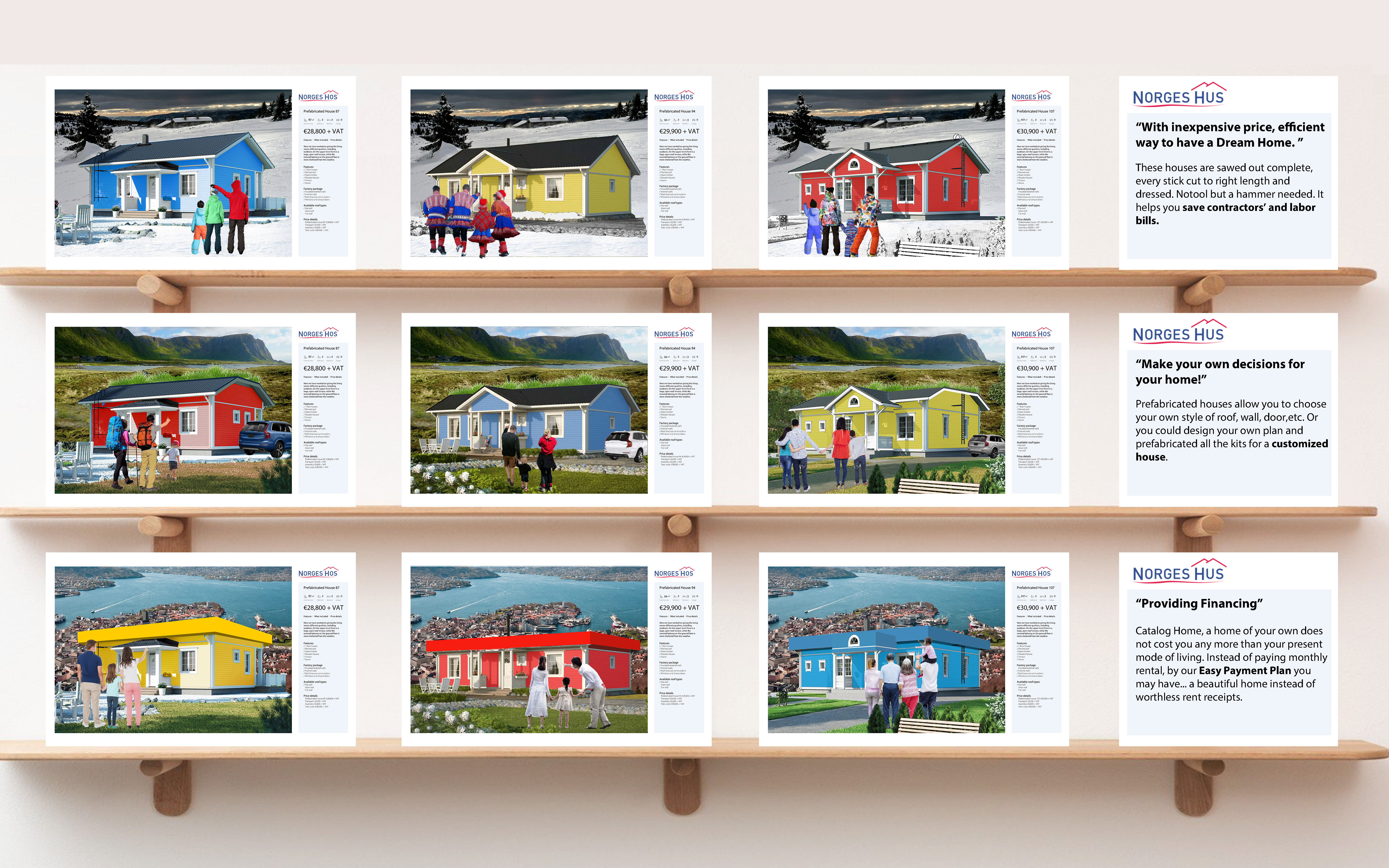


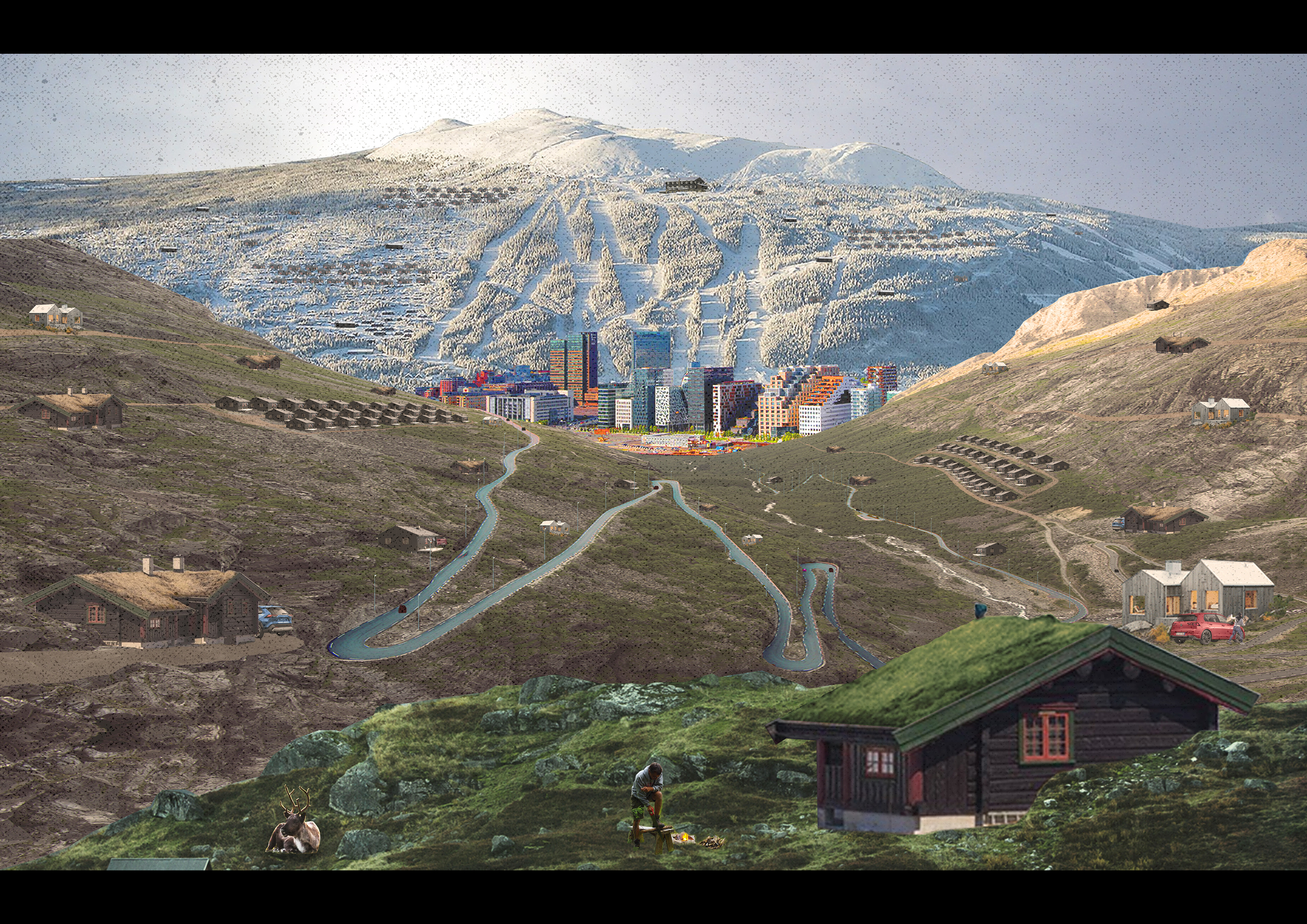
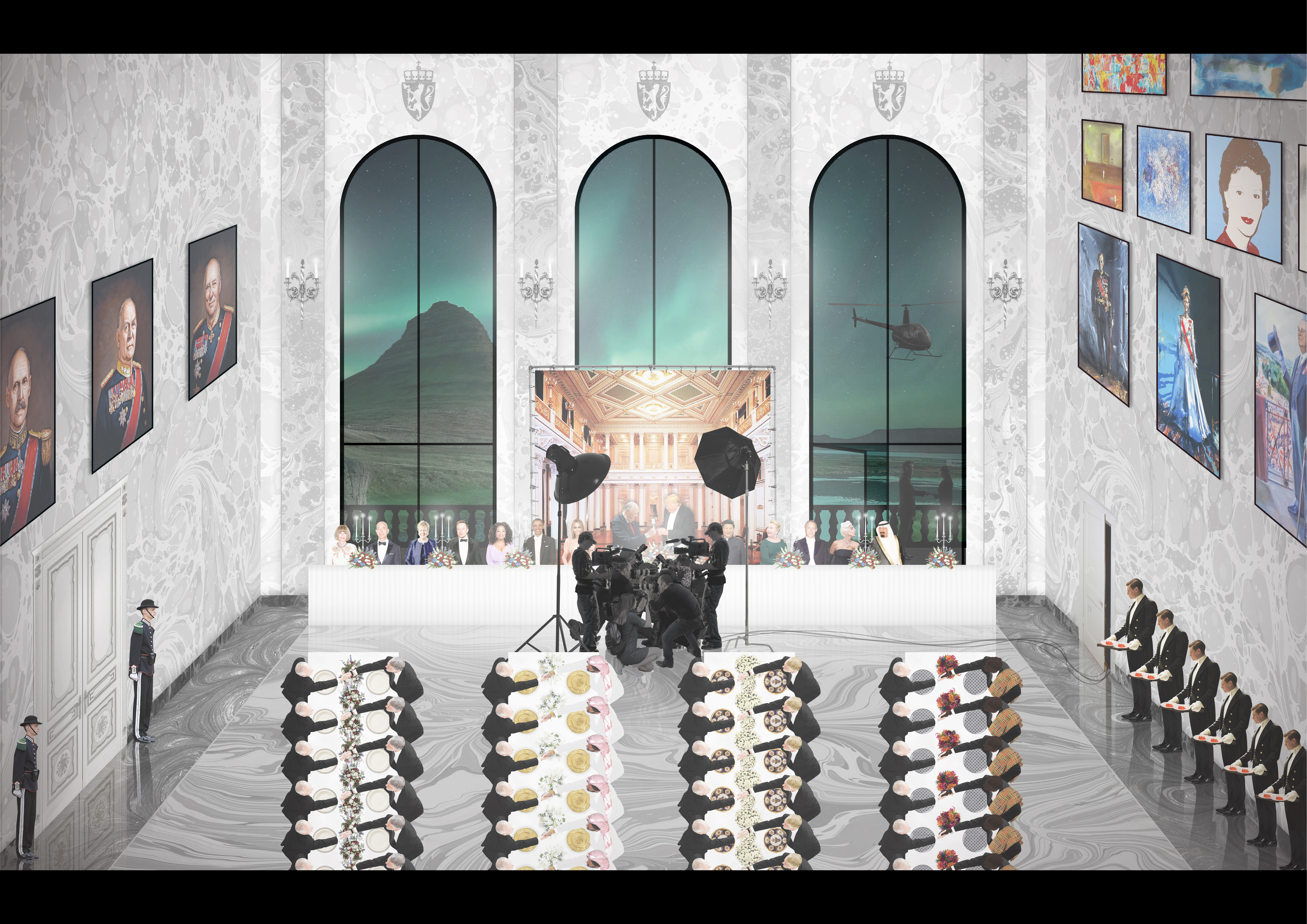

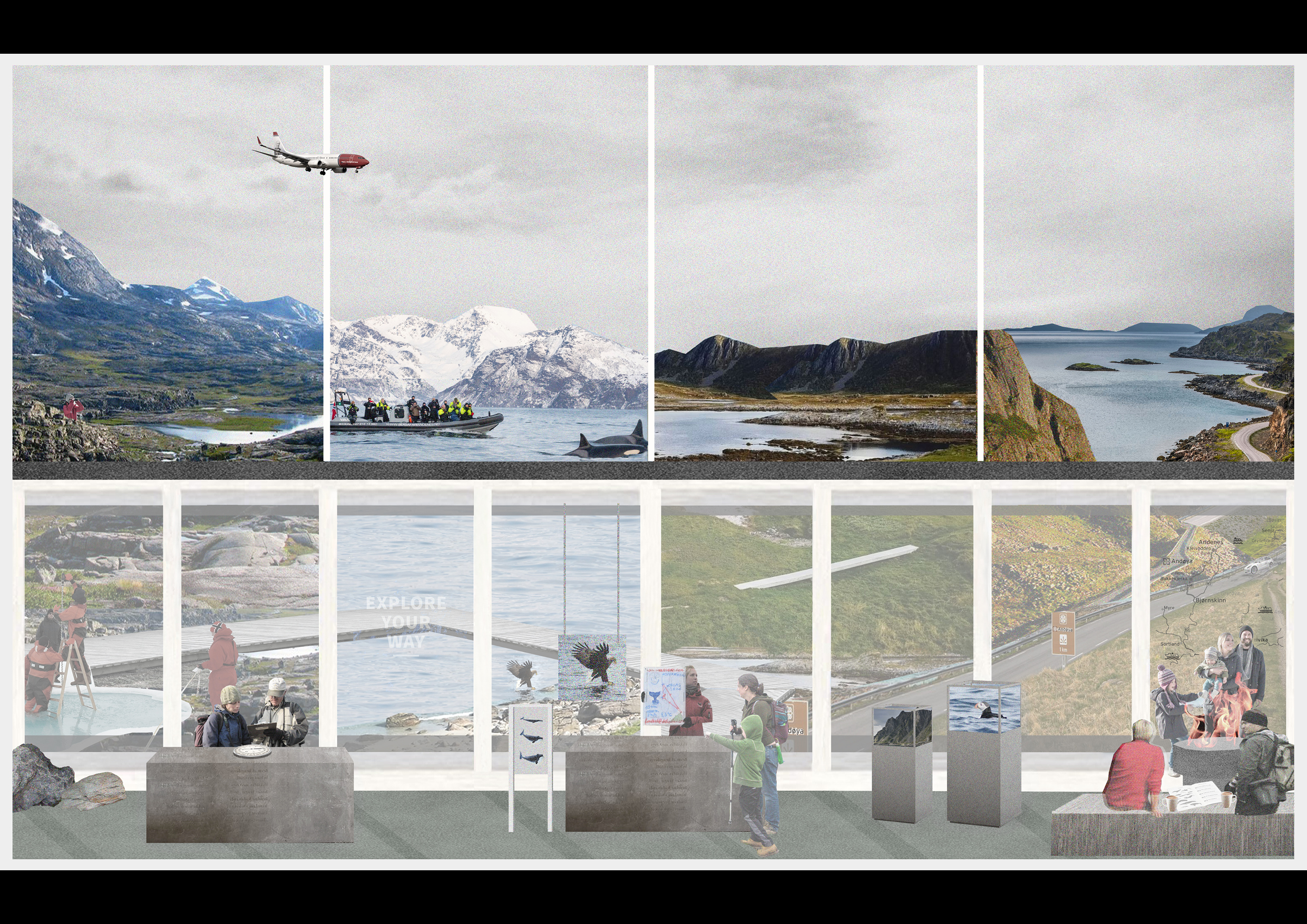

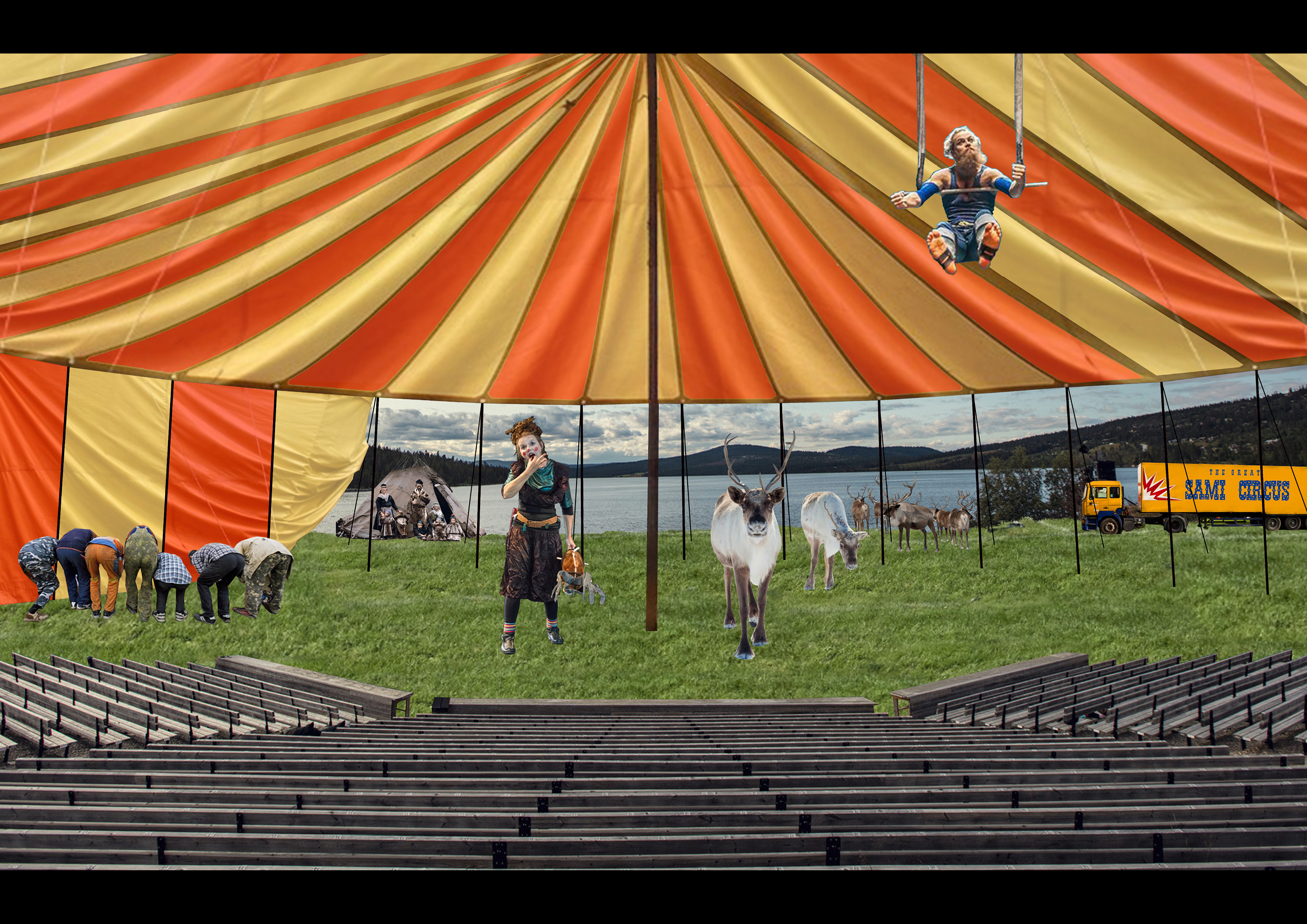
Thirteen
Contributions
Title
Another StoryThe BAI (Bergen Architecture Institute)
The Pixelated Ministry of Things
The Buffer Zone
The Norwegian Catalog House
Non-Stop Landscape
Plug and Play
The Second Cabin
The Official in Residence
Astronomical Retreat
Tourist Trap?
A Place to Land
At the Circus
Student
Theodora GelaliMarianthi Papangelopoulou
Gent Shehu
Marco Fusco
Sheng-Hao Hsu
Shaiwanti Gupta
Siyuan Wang
Felipe Quintero
Stef Dingen
Santiago Ardila
Daniella Camarena
Juan Benavides
Jack Garay Arauzo
Location
BergenBergen
Bergen
Bergen
Kvitfjell
Kvitfjell
Kvitfjell
Kvitfjell
Andøya
Andøya
Andøya
Andøya
Andøya...
Examiners
Paul VermeulenNathalie de Vries
Dick van Gameren
Kees Kaan
Nathalie de Vries
Dick van Gameren
Paul Vermeulen
Daniel Rosbottom
Daniel Rosbottom
Kees Kaan
Paul Vermeulen
Kees Kaan
Daniel Rosbottom
︎︎︎To Collective Project